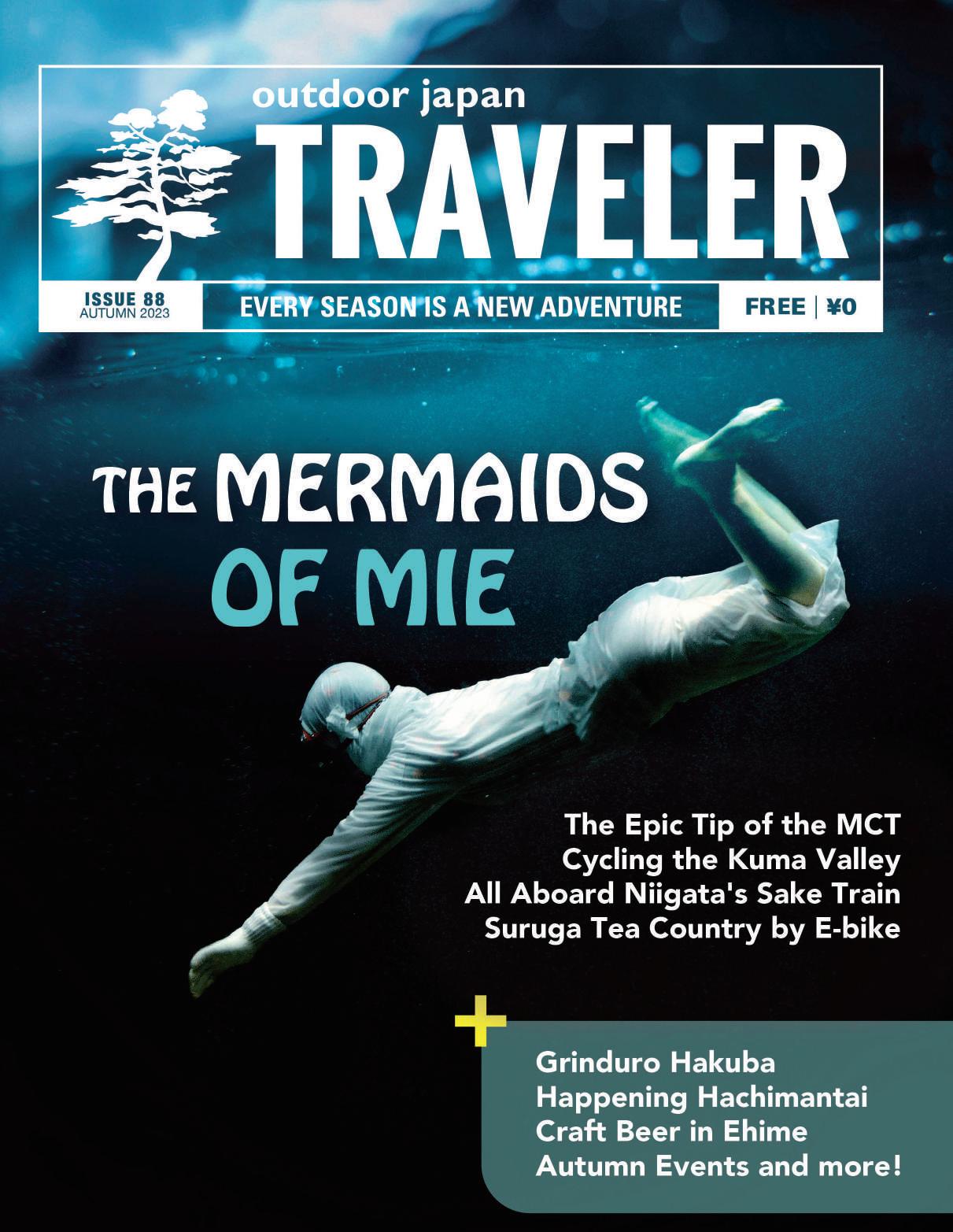



































ISSUE 88 15 AUTUMN 2023 THE EPIC NORTHERN TIP OF THE MCT From the Editor . . . . . . . . . . 4 Autumn Events . . . . . . . . . . . 6 Local Brew. . . . . . . . . . . . . . . 9 Cycle Scene. . . . . . . . . . . . . . . . . . . . . . 10 Cycling the Kuma Valley. . . . . . . . . . . 24 Travel Directory. . . . . . . . . . . . . . . . . . 30 INSIDE 18 26 Life on the Road in Japan All Aboard Niigata's Sake Train Suruga: Japan Tea Country by E-Bike 21 12 The Mermaids of Mie
PUBLISHER
Outdoor Japan G.K.
DIRECTORS
Mike Harris, Charles Odlin, Gardner Robinson
FOUNDER / EDITOR-IN-CHIEF
Gardner Robinson
MEDIA PRODUCER / EDITOR
Rie Miyoshi
CONTRIBUTING EDITOR
Bill Ross

CONTRIBUTORS
Quinlan Faris, Trent Maxwell, Samantha Mythen, Céline Pasche, Kathryn Wortley
DESIGN
Outdoor Japan
OUTDOOR JAPAN G.K.
45 Yubiso, Minakami-machi, Tone-gun, Gunma-ken 〒 379-1728
EDITORIAL INQUIRIES editor@outdoorjapan.com
VIDEO / MEDIA PRODUCTION media@outdoorjapan.com



SPONSORSHIP / PROMOTIONS media@outdoorjapan.com
DESTINATION MARKETING media@outdoorjapan.com


@outdoorjapan
From the Editor
Autumn is a big season for travel in Japan. The weather—barring the occasional typhoon—is dry and comfortable. This year, however, summer refuses to release its sweaty grip. There have been record temperatures across Japan. Climate change is no longer a distant issue—it’s in our Tokyo living rooms and bouncing off the pavement on our daily walks.
Japan’s annual travel trade show takes place in autumn with the Tourism Expo Japan coming to Osaka Oct. 26-29. Japan’s travel industry gathering welcomes travel professionals from around the world to meet their counterparts as well as travelers during the consumer days. We’ve attended many over the years connecting and working with local tourist organizations to promote adventure travel and sustainable tourism, with various levels of success.
Recently, however, I was invited as an official media delegate to go to Sapporo for the first Adventure Travel World Summit (ATWS) held in Asia. I’ve attended travel trade shows from Beijing to Kuala Lumpur and countless times in Japan, but this one was different.
It felt like a huge reunion. Attendees were excited and passionate, the messaging targeted. There was a focus on making sustainability non-negotiable, investing in indigenous communities and reaching global standards for adventure travel guides. There were lively discussions on trends and topics—including how AI is affecting everyone from media to tour and travel planners.
Sapporo did an exceptional job hosting and made sure omotenashi was on full display. There were cultural activities such as karate, Japanese calligraphy, green tea ceremony and Zen meditation throughout the week as well as a Day of Adventure to dive into some great activities around Hokkaido. The opening ceremony at Sapporo Okurayama Ski Jump Stadium highlighted Japan’s Olympic history, complete with a gold medal athlete, performances by ski jumpers and Ainu musicians—even a visit from Hokkaido’s governor.
One of the highlights of the week for me was the final keynote speaker, acclaimed author and long-time Japan resident, Pico Iyer. The writing of Pico and Alex Kerr had a big influence on me when I first came to Japan and I’m grateful to have had the chance to connect with them both this year through projects we’ve worked on. Pico captivated the audience with his dry wit and poignant observations about “The Land of Wa.”

Before and after the summit, overseas delegates joined tours throughout Japan, getting first-hand experience and inspiration to create tours for their clients. From start to finish there was little wasted time during the ATWS, but many opportunities to make meaningful connections.
And connections is what makes travel so powerful. We hope you’ll get some inspiration from this issue from hiking and cycling to sake trains and real-life mermaids. Every season is a new adventure in Japan. Get out there and discover yours!
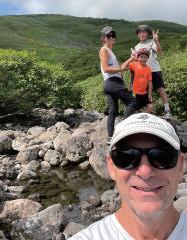
4 | TRAVELER
Seasonally
Published
Cover Photo: Courtesy of Iseshima Tourism & Convention Organization
©2023 OUTDOOR JAPAN G.K. all rights reserved. Reproduction in whole or in part without written permission is prohibited. Views expressed herein are not necessarily those of OUTDOOR JAPAN G.K. Printed in Japan. AIRLINE PARTNERS Traveler magazine is available at selected lounges, reservations counters and in-flight libraries with the following airline partners. トラベラーマガジンは、空港ラウンジや予約カウンターや、右記航空会社インフライト・ライブラリーにてお読みいただけます。 —Gardner
4 | TRAVELER
Robinson Editor-in-Chief

GUIDE LINES Autumn Events
RACES
Sea to Summit
The last two events of the year’s popular outdoor series take place in Miyagi and Nagano. Experience autumn through canoeing, cycling, trekking and other means of human-powered movement organized by Montbell. Participants can compete solo or as a team.
When & Where:
Oct. 7-8: Kamimachi, Miyagi
Oct. 14-15: Chikuma River, Nagano Web: seatosummit.jp
Shinshiro Spartan Trail Classic

This trail run will be held in historic Shinshiro, remembered for its 16th-century war between the Oda-Tokugawa forces and the Takeda forces at Nagashino Castle. The city boasts attractions like the 695-meterhigh Horaijiyama, and sacred sites related to Shogun Ieyasu Tokugawa including Horaiji Temple, Toshogu Shrine and Nagashino Castle. It's also a natural haven with notable landmarks such as the 64-meter-high Atera no Nanataki waterfall and the Chiiwakyo Gorge, with its caves and massive rock formations.

When: Oct. 28-29
Where: Shinshiro, Aichi Web: www.spartantrail.com
Altra Shinshu Tenku Trail Race
Head to northern Nagano for this 27-kilometer trail and road race. You’ll be running the Hijiriyama Trail with great views of the surrounding mountains, vineyards and koyo (autumn leaves). Celebrate after the race with a long soak in an onsen and delicious local cuisine.
When: Oct. 29
Where: Omi, Nagano Web: samuraisports.org
Kanazawa Marathon
Combine a trip to the scenic Kanazawa area with a marathon. This race passes Kanazawa’s iconic attractions like Kenrokuen Garden, the Ishikawa Gate of Kanazawa Castle, Higashiyama and temple towns.
When: Oct. 29
Where: Kanazawa, Ishikawa Web: kanazawa-marathon.jp
Osaka Yodo River Citizens Marathon
This race follows the riverbank and is a great entry into marathon running with its easy access and relatively minimal elevation gain. There is also a half-marathon which starts at 9 a.m.
When: Nov. 5
Where: Moriguchi, Osaka Web: osaka42195.com
OMM Japan
OMM is one of the toughest adventure events out there. The mountain navigation race held in extreme environments in different regions across Japan each year. Although entries are closed for this year, keep an eye out for next year’s race as well as their less intense OMM Lite and Bike Hakuba in summer.
When: Nov. 10-12
Where: Kitayatsugatake, Nagano Web: theomm.jp
Spartan Race Super, Sprint and Kids
This 25-obstacle race blends speed, endurance and technical skill. A 5K sprint and a kids race are also available.
When: Dec. 2
Where: Blumen Hugel, Shiga Web: spartanracejapan.jp
Oise-san Half Marathon
Tour the sacred region of Ise while participating in this half marathon. This unique race takes you past the famous Ise Jingu, one of Japan’s most revered Shinto shrines, and Edo-period landscapes. Before or after the race, enjoy Mie’s famous seafood and religious history. There is also a fivekilometer race held on the same day and a walking and barrier-free race the previous day.
When: Dec. 3
Where: Ise, Mie Web: samuraisports.org
Nara Marathon
Run through Japan’s ancient capital. This race starts at Konoike Stadium and takes you through historic towns and impressive temples and past Nara’s famous inquisitive deer. There are also ten-kilometer and three-kilometer courses available.
When: Dec. 9-10
Where: Nara City, Nara Web: nara-marathon.jp
Mt. Mitake Trail Race
Experience a different side of Tokyo out west at Mt. Mitake. This race starts at the base of Mt. Mitake with a steep paved climb before the trail. Watch out for steep descents! Run through sleepy local neighborhoods, climb Mt. Nabewari, famous for its nabe (hot pot) served at the mountain hut, and traverse Okunoin. The race finishes at Musashi Mitake Shrine.
When: Dec. 10
Where: Mitake, Tokyo Web: samuraisports. org
EVENTS
Sumida Jazz Festival
This free event is a must for jazz enthusiasts. Baird Beer will be serving craft beer.
When: Oct. 14-15
Where: Sumida, Tokyo Web: asagirijam.jp
Asagiri Jam
Nicknamed "the real Fuji Rock” for its idyllic location at the foot of Mt Fuji, this music festival is a laid-back two days of camping, rock, Indie and dance music by international and local artists. Workshops, morning yoga and activities for children are held around the two main stages.
When: Oct. 21-22
Where: Asagiri Arena, Shizuoka Web: asagirijam.jp
6 | TRAVELER
Okinawa Sea Turtle Festival
Combine a tropical holiday with this inaugural event supporting sea turtle conservation in Okinawa. A beach clean, food trucks, flea market, live performances and sea turtle olympics organized by NPO Chura Mura will all benefit protecting these beautiful creatures.
When: Oct. 21
Where: Zanpa Beach, Yomitan, Okinawa Web: churamura.org
Earth Garden
Live music and organic brands come together for this music festival and ecofriendly market held in the middle of the city.
When: Oct. 21-22
Where: Yoyogi Park, Tokyo Web: earth-garden.jp
Brightness Music & Art Festival
Enjoy dance music at this seaside park not far from Tokyo. This festival is popular for its all-night music performances and lights.
When: Oct. 21-22
Where: Chidori Park, Kanagawa Web: brightness-music.com
Tourism Expo Japan
One of the world's largest annual travel trade shows, in one of the world’s largest travel markets. B2B only the first two days, consumers welcome the last two.
When: Oct. 26-29
Where: Intex Osaka, Osaka Web: t-expo.jp/en
Baird Beer Harvest Fest
Enjoy the Halloween weekend in Izu at the Baird Brewery and Taproom in Shuzenji. There will be live music, comedy shows, food, costume contests and more.
When: Oct. 28-29
Where: Shuzenji, Shizuoka Web: bairdbeer.com
Yokonori Nippon Film Festival
Japan’s surf, skate and snow scene is celebrated at this weekend film festival dedicated to yokonori, literally translated as “riding sideways.” Showings are held in the Shonan surf town of Chigasaki. Purchase tickets online.
When: Nov. 3-4
Where: Aeon Cinema Chigasaki, Kanagawa Web: yoko-nori.net
Mugi no Toki Music Festival
Part music festival, part craft beer festival, this event is held in collaboration with Coedo Craft Beer in Saitama. Enjoy custom beers served only at this festival, check out the brewery and camp overnight.
When: Nov. 11-12
Where: Higashimatsuyama, Saitama Web: hmuginotokiongakusai.jp/2023seeds
TRADITIONAL FESTIVALS
Jidai Matsuri
Step back in time as people parade in traditional Japanese garments through Kyoto, reflecting the region’s 1,200-year history. The procession starts from Kyoto Imperial Palace, traveling along Oike-dori to Heian Jingu Shrine.
When: Oct. 22
Where: Kyoto Imperial Palace, Kyoto
Arashiyama Momiji Festival
Celebrate the changing autumn leaves at this annual festival in iconic Kyoto. Boats parade in the river around Togetsu Bridge, with elaborately dressed characters on board reflecting the Heian Period nobles.
When: Nov. 12
Where: Arashiyama, Kyoto Web: arashiyamahoshokai.com
Rikugien Gardens Autumn Illumination
View koyo under the night sky at Rikugien Gardens. Built during the Edo Period, this daimyo teien belonged to a feudal lord and remains a popular destination to view the autumnal foliage.
When: End of Nov. - Beg. of Dec. Where: Rikugien Gardens, Tokyo
CRAFT BEER FESTIVALS
Sept. 29-Oct. 15: Yokohama Oktoberfest (Kanagawa)
Oct. 4-9: Craft Gyoza Fes (Saitama)
Oct. 7-9: Craft Beer Holiday (Osaka)
Oct. 14-15: Mikkeller Beer Celebration (Tokyo)
Oct. 14-15: Brewer’s Camp (Shizuoka)
Oct. 20-22: Inage Kanpai Beer Fes (Kawasaki)
Oct. 20-29: Kyushu Oktoberfest (Fukuoka)
Nov. 2-5: Deutschlandfest (Tokyo)
Dec. 6-10: Belgian Beer Weekend
Shinjuku "Christmas Edition" (Tokyo)
OTHER
Earth Hopper
Take advantage of this season pass valid for more than 40 popular ski resorts throughout Japan. The Earth Hopper Snow Lite pass costs ¥27,800 and the Earth Hopper Standard Pass is ¥42,800.
Participating resorts include Kamui Ski Links, Kiroro Snow World, Zao Rise World, Appi Kogen, Hachimantai Panorama and Shimokura, Geto Kogen, Akakura Kanko, Lotte Arai, Madarao Kogen, Tangram Ski Circus, Kurohime Kogen, Tsugaike Kogen, Hakuba Cortina Ski and more. These passes are also year round and can be used for MTB parks, the Forest Adventure obstacle parks around Japan and marine sports. Web: www.hopper.earth
Autumn 2023 | 7 7
ROAD TRIP JAPAN YOUR WAY WITH TRAVELLERS AUTOBARN
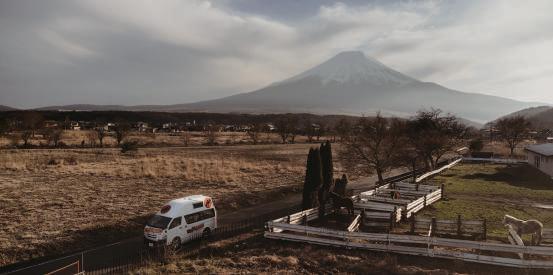
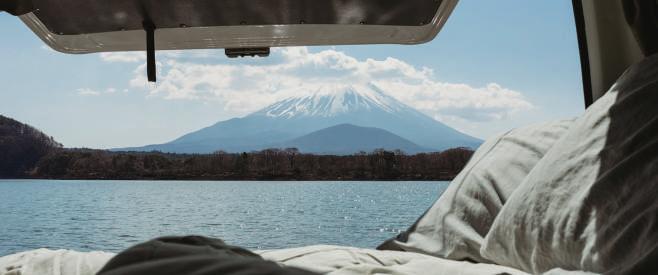
WHO IS TRAVELLERS AUTOBARN?



















We are a camper van rental company that has been creating high-quality, custom-built camper vans for 20 years for travelers to enjoy from locations in Australia, New Zealand, the U.S. and— from this year—in Tokyo, Japan!
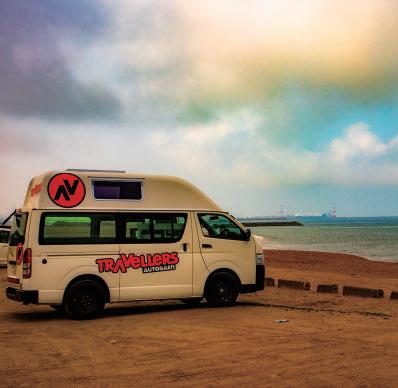
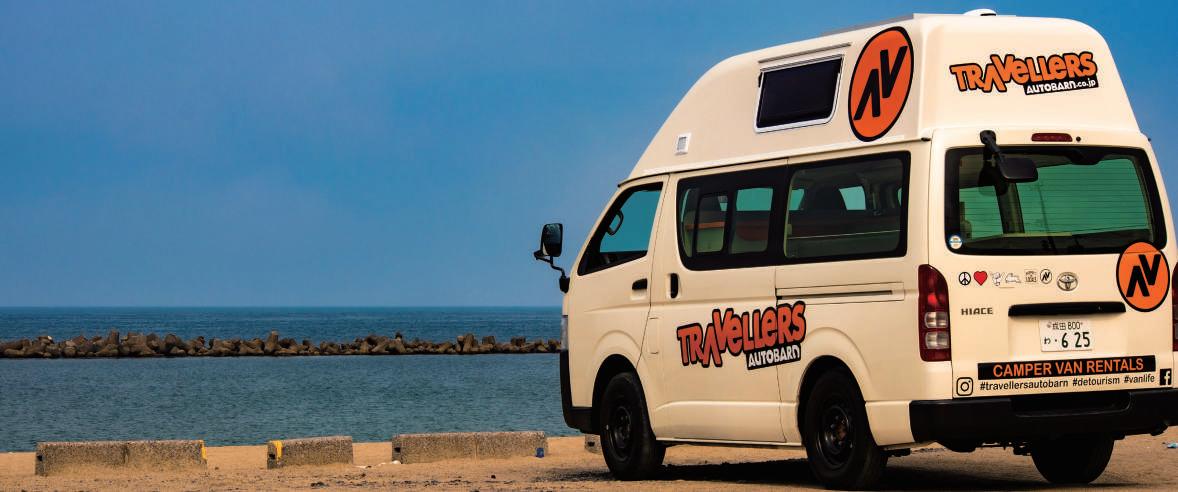
WHAT KIND OF CAMPER VANS ARE AVAILABLE?
All our camper vans come with free, unlimited kilometers and are available to anyone in Japan 18 years or older (21 in the USA). In addition, we offer a large range of services including discounted campgrounds, free roadside assistance, and much more. Our vans have more space and height (two meters) compared to other camper vans, meaning even with your bed in place, you are still able to stand up in the van to get dressed or make coffee on the gas stove!essed or
WHAT ARE SOME COOL ROUTES TO EXPLORE?

We recommend a road trip in autumn to see the kouyou (fall foliage) as it starts up north and works its way down through Japan. Be sure to check the kouyou forecast online to plan your trip accordingly, as it can start as early as late September in Tohoku and go on until December in the south. Make sure to warm up in the many hot springs along the way and drop by michi-no-eki (roadside stations) for souvenirs and delicious food.
Whether you’re heading to the beach or the colorful mountains, we’ve got you covered. For road trip ideas, visit our website for itineraries.
Web: travellers-autobarn.co.jp/en/
E-mail: info@travellers-autobarn.co.jp
Open: Monday-Saturday: 9 a.m. - 5 p.m.
Closed: Sunday and public holidays
Phone: (0476) 94-3133
8 | TRAVELER
Enjoy the freedom to explore Japan this autumn and winter in your own custom camper van!
FREE UNLIMITED KILOMETERS NO YOUNG DRIVER FEE 24/7 MULTI-LANGUAGE ROADSIDE ASSISTANCE FRIENDLY PICK-UP / DROP-OFF TIMES EASY ACCESS FROM AIRPORT
DD4D BREWING
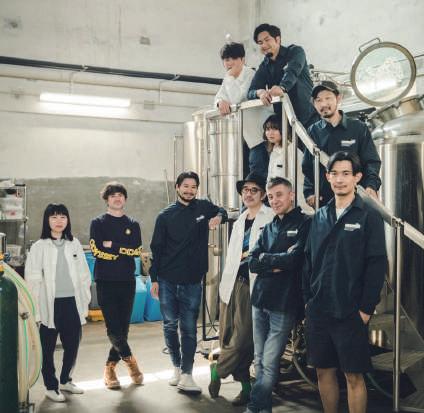
MATSUYAMA, EHIME PREFECTURE
BY RIE MIYOSHI
In nearly every brewery taproom you’ll find T-shirts, caps and other merchandise. The beer comes first, but the branded merchandise is popular as well. At the quirky and playful DD4D Brewing in Matsuyama, Ehime Prefecture, however, it was the other way around. This former apparel-only store expanded into brewing craft beers in 2019 when Keita Yamanouchi moved back from Tokyo in hopes of starting a craft brewery in his hometown. His late father had owned DD4D, and it was the store manager who suggested to Yamanouchi, “Why not use the DD4D store as your base?”
Known as the “Citrus Kingdom,” Matsuyama City is one of Japan’s leading producers of citrus fruit, their most famous being mikan (tangerine). Led by Yamanouchi and brewmaster Michael Donohue, from Philadelphia, the international team at DD4D takes advantage of this and uses seasonal citrus like mikan (tangerine), iyokan and yuzu prominently in their beers, which range from IPAs, sours, barleywines and more. They also use other unique products including sansho (Japanese pepper), soybean flour, cherries and hibiscus. This May, they launched a special 4th Anniversary series of beers including Sake Yeast Beer, which, as its name suggests, tastes like sake . They pride themselves on creating new beers nearly every week— more than 150 beers in the last four years— and have won gold at the International Beer Cup three years in a row.
Their classic DD4D IPA is a simple West Coast IPA that doesn't use any secondary ingredients, so the quality and quantity of hops and brewing techniques are directly visible. Since this beer uses a lot of hops, it is important to control oxygen levels to prevent the beer from deteriorating.
They also add a large amount of sucrose so the yeast can decompose, suppressing the sweetness while increasing the hop aroma.
Daily Dose is a sour ale flavored with iyokan, a citrus found in every home during the winter. The aroma of the ale shifts depending on the iyokan ’s production area and season.


“Our Don Jalapeño west coast IPA is very popular,” says marketing manager Shin Murakami. “The aroma of the jalapeño creates a good balance with the flavors of the IPA.”
DD4D also collaborates with other breweries, their most recent Nomcraft in Wakayama Prefecture. The collaboration came about when they each of their kegs was mistakingly returned to the other, so they created a citrus beer since Ehime and Wakayama are both known for their fruit. Their second collaboration was a double IPA.
While the store still continues to sell clothes, there’s a taproom for locals and visitors to enjoy their beers. In December 2021, they also opened DD4D Factory and Curiosities near the harbor, just a half-hour drive from the store and taproom. The factory allowed them to expand brewing and start canning their beer. There’s a taproom there as well.
Finally, why the name DD4D? “Yamanouchi’s father named the store, but passed away without telling anyone the meaning, so it remains a mystery for all of us!” says Murakami.
DD4D Brewing and Clothing Store

japandemic.co.jp/en
Mondays to Saturdays, 11:00-20:00


Friday and Saturday, 11:00-21:00
(Closed on Wednesdays)
Autumn 2023 | 9
Cycle Scene
BY TRENT MAXWELL
Hakuba Grinduro
Grinduro returns to Japan on Oct. 7-9 in Hakuba, taking the place of last year’s successful Hakuba GravelFest that saw 200 cyclists ride a thrilling network of 160 kilometers of mixed trails. is year’s multi-stage, enduro-style event will cover 95 kilometers of new and existing trails from Iwatake’s downhill MTB trail, through the magical Nodaira rice fields, then a loop around Lake Aokiko and along the Matsukawa River to a grand finish at the Olympic Ski Jump Stadium. Ride Japan’s Adam Cobain shares more about Grinduro’s triumphant return after a four-year hiatus.

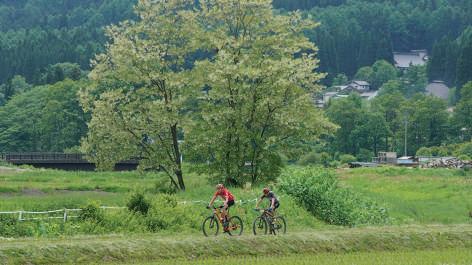
HOW









HAS THE RESPONSE BEEN TO BRINGING GRINDURO TO HAKUBA?
The gravel scene has changed a lot since the last Grinduro in Japan in 2019. It was hard to know how the brand would resonate here after such a long break, but we were amazed by the quick response of riders signing up. Hakuba is a great fit for Grinduro with the existing trails and sponsors and support.
WHAT’S SPECIAL ABOUT THE EVENT FORMAT AND THE COURSE?


















Grinduro was born out of balancing the “partyto-race” ratio. Too many events focus solely on competition and forget that many of us come to be part of the cycling community. Ultimately, it’s about sharing the joy of cycling by bringing together all types of riders in a village atmosphere with great food, live music and Grinduro good vibes.
Yet on the bike it’s all about a great course with four timed sections that are accessible to most types of bikes—except pure road bikes! The 95K course is up and down with a mix of MTB trails, forest roads

WEB CONNECTION
Grinduro Japan: grinduro.com
Ride Japan: ridejapan.cc
Hakuba Hotel Group: hakubahotelgroup.com
and gravel. More than 50 kilometers of the course is dirt, so the best bike is a gravel, MTB or something in between. There are drink stations and safety is paramount.
The Hakuba Valley is stunning in autumn. We want our riders to immerse themselves in the landscape and be part of the beauty during the amazing ride.
WHAT KIND OF IMPACT DO YOU FORESEE GRINDURO HAVING IN HAKUBA?
Given that more than 450 riders are expected for Grinduro, along with family, friends and sponsors, we expect over 1,200~1,500 visitors to the region for the event. We use local suppliers for all course support, food, beverage and staging and estimate there will be 30-50 million yen directly injected into the local economy through accommodation, food, transport and more.
WHAT’S NEXT FOR GRINDURO JAPAN?
We already have dates set for 2024 and the key things we look for are a great course, access and camping. We chose Hakuba based on this and the local support. We also need to weatherproof the event as best we can. I hate canceling! I'll be first to admit the camping has had to take a back seat for 2023, but we will offer what we can and make sure to develop that more in 2024. That being said, given the unpredictable weather in Japan (as many may remember from 2019), having warm beds with showers and onsen available (starting at just ¥6,000 right next to the event village with the Hakuba Hotel Group) isn’t a bad thing.
There are many regions in Japan where Grinduro would fit well, but lining up all the criteria takes some time and planning—so let's see where 2024 takes us!
10 | TRAVELER
Happening Hachimantai
It’s no secret that the global MTB tourism world is booming with not only domestic adventure tourists but thrill seekers saving their holidays to fly around the world—and the sight of overflowing carparks and gondola queues at MTB parks like Iwatake in Hakuba and Fujiten down near Mt. Fuji confirm the trend has certainly reached the southern and central Japan Alps. But how is it catching on further north? To find out we headed to Tohoku to see how the MTB scene is shaping up in Hachimantai, Iwate.
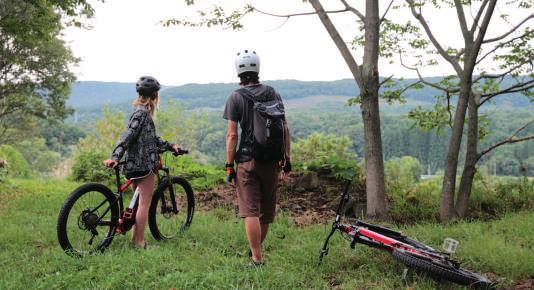
Clubman Lodge MTB Guide Junya
Kuragane has swapped his fat skis for fat tires to explore some of the great local trails around Hachimantai. It’s clear that APPI Resort has potential to become a big part of the MTB scene with a variety of trails. Junya takes visitors up the gondola to enjoy the views of Iwate-san’s volcanic and geothermal landscape before enjoying a swift descent back down to the base.
We were also joined by father and son duo Pete and Jake Early, the former a teacher at the newly launched Harrow International School Appi Japan and the latter a student. Freeride Japan MTB instructor Lisa Sheffield, who is helping grow mountain biking in the area, rounded out the crew.

Harrow is a progressive school that















boasts a dedicated MTB Academy Enrichment Program for students, with two sessions per week to develop key riding skills from PMBIA, the world’s leading MTB training association. There is a big initiative underway to develop a skills park, beginner downhill trail and a cross-country trail network expansion for the whole community.
This is welcome news for Junya and Clubman Lodge who have been in Hachimantai for generations, mostly guiding in the winter months, but also stepping into mountain biking and green season guiding. There has been an increase in Japanese and foreign visitors, typically from Tokyo, who have found their way to Hachimantai in order to explore the area by mountain bike. From Iwate-san, which stands just over
2,000 meters, there is a forest trail and road cycling network that reaches all the way across to APPI Resort and beyond.

Currently there are plenty of easy trails and roads that can be traversed by road bikes, MTBs and the increasingly popular e-bikes, which extend touring without as much effort. Traditionally hikers and trail runners have been setting the trails in the area and hopefully these can also expand into to cross-country MTB trails. The ride up to the beech tree forest to see the local horses is especially nice.
Keep an eye on APPI Resort as the local riders and Harrow International School Appi Japan keep pushing the MTB scene forward, creating downhill courses and hopefully developing the area into a year-round adventure tourism destination in Tohoku. v
WEB CONNECTION
Harrow APPI: harrowappi.jp
APPI Resort: appi-japan.com
Clubman: clubman.co.jp
Hachimantai Tourism: hachimantai-dmo.trip8.jp
PMBI: pmbia.org




































Autumn 2023 | 11
Autumn 2023 | 11
The Mermaids of Mie
BY RIE MIYOSHI | PHOTOS BY TRENT MAXWELL

Overfishing, ocean pollution and sea bed crawling, which destroys ocean floors, are just a few of the threats the ocean is facing today. Mie Prefecture’s Ago Bay offers socially conscious travelers the chance to dive deep into the traditional—and sustainable—world of ama diving.

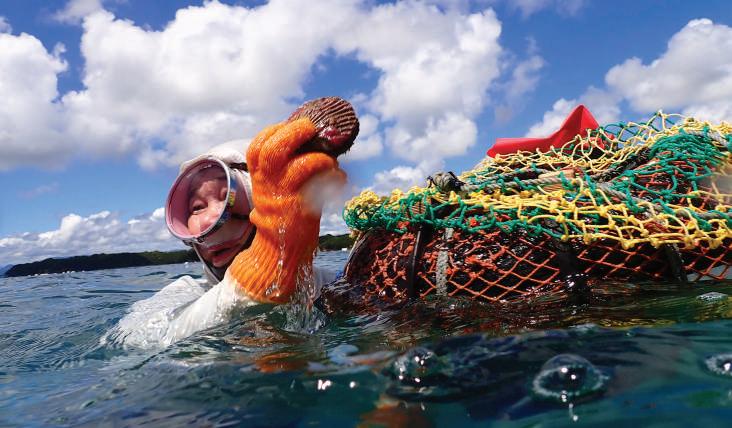

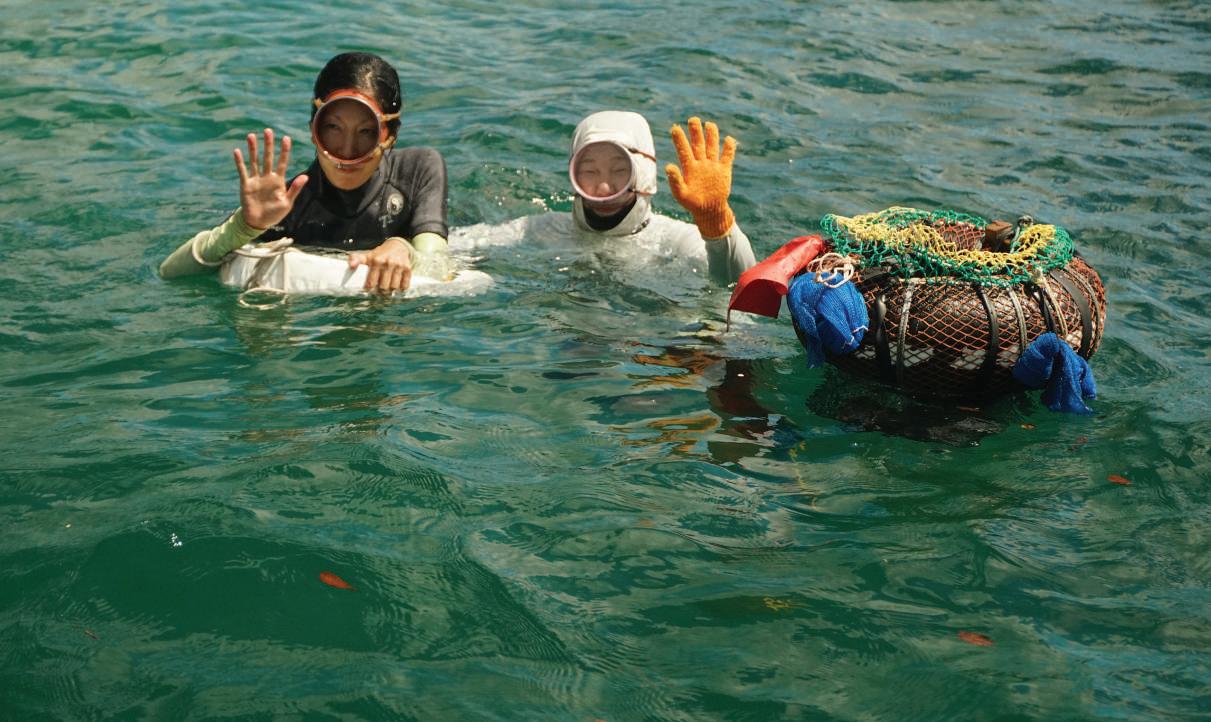
12 | TRAVELER
Ama translates to "sea women” and refers to the Japanese female freedivers who have honed their skills over generations. These fearless underwater hunters employ traditional techniques and minimal equipment to harvest a bounty of seafood from the ocean's depths. With a history spanning more than 2,000 years, ama diving not only serves as a means of sustenance, but also as a symbol of resilience, cultural pride and a profound respect for the ocean's treasures.
The earliest written records of ama date back to the 8th century in the Man’yoshu, an anthology of Japanese poems (although others say this practice has existed for thousands of years prior). It is said that women were traditionally chosen as ama divers since they have more subcutaneous fat compared to men, making them more resilient to cold temperatures. In the past, they were equipped only with a diving mask, tenugui (bandana) and fundoshi (loincloth), secured to the boat with a simple rope tied around their waist. Post World War II, they wore more modest outfits made of white cloth or rubber wetsuits.
Today, the ama continue to freedive using minimal equipment (using diving tanks is prohibited). Although there were as many as 10,000 divers around Japan after World War II, that number has dropped to 2,000, most of whom are in their 60s or older— ama diving as a career has become less lucrative. Kachido divers work in shallow depths (four to eight meters) while funado divers use heavy weights to bring them down as deep as ten to fifteen meters. They work up to two minutes underwater before resurfacing
and letting out an isobue, a whistling noise to help regulate breathing between dives. Their fresh catch is placed in nets floating on the surface.

While you can sometimes find ama diving in coastal towns in Japan and South Korea (called haenyeo ), Mie Prefecture is said to be where ama diving originated. It is blessed by Ise Bay’s rich marine ecosystem which has historically provided abundant opportunities to harvest seafood. This was further supported by the Mikimoto Pearl industry. In 1893, Kokichi Mikimoto, a resident of Toba, Mie, successfully cultivated the world's first cultured pearls, revolutionizing the pearl industry. Ama divers played a crucial role in collecting oysters and participating in the pearl cultivation process.
Mie has also developed initiatives to celebrate this tradition, making it a hub for those interested in experiencing the world of ama diving while simultaneously ensuring the sustainability of marine resources through conservation efforts. Armed with local knowledge and low-impact techniques, the divers selectively harvest according to season, thereby preserving their environment.

While you can watch a demonstration of ama diving from the Ama Viewing Platform at Mikimoto Pearl Island, tour company MIEscape takes it one step further by offering a unique experience where you can join an ama diver to harvest seafood and then dine on your fresh catch at the ama hut afterwards.

The tour starts at Kashikojima, one of two inhabited islands in Ise-shima National Park (there are just 98 residents), and famous for its azure waters and pearl cultivation. The

Autumn 2023 | 13
island is connected to the mainland by two bridges and is surprisingly easy to access by train. After changing into a wetsuit and listening to instructions, you’ll board a small boat with an ama diver and spend a morning assisting and learning to freedive (or snorkel if that’s more your pace) for shellfish.
Our ama diver for the day is Kimiyo Hayashi, a local who has been diving since she was a child.
“My mother and grandmother were both ama divers,” remembers Hayashi, whose summers were spent playing in the ocean. “After graduating from middle school, I had an opportunity to go to America for work as an ama demonstrator.” That was when Hayashi decided to pursue ama diving full time. Even at the age of 68, she effortlessly dives down as deep as six meters. Most divers dive for half a year (spring to summer) and spend the other seasons farming or helping with pearl harvesting, but the hardy Hayashi dives throughout the year.
After diving, head to Satoumian, a restaurant and ama hut, where you can hear more of the ama diver’s stories as she prepares and grills your seafood. From March to September you’ll be able to catch awabi and tokobushi abalone, sazae (turban shell) and uni (sea urchin). In October, the ama divers turn to Ise ebi lobsters.
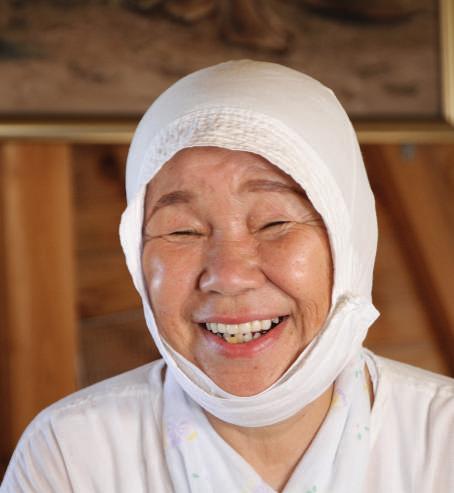
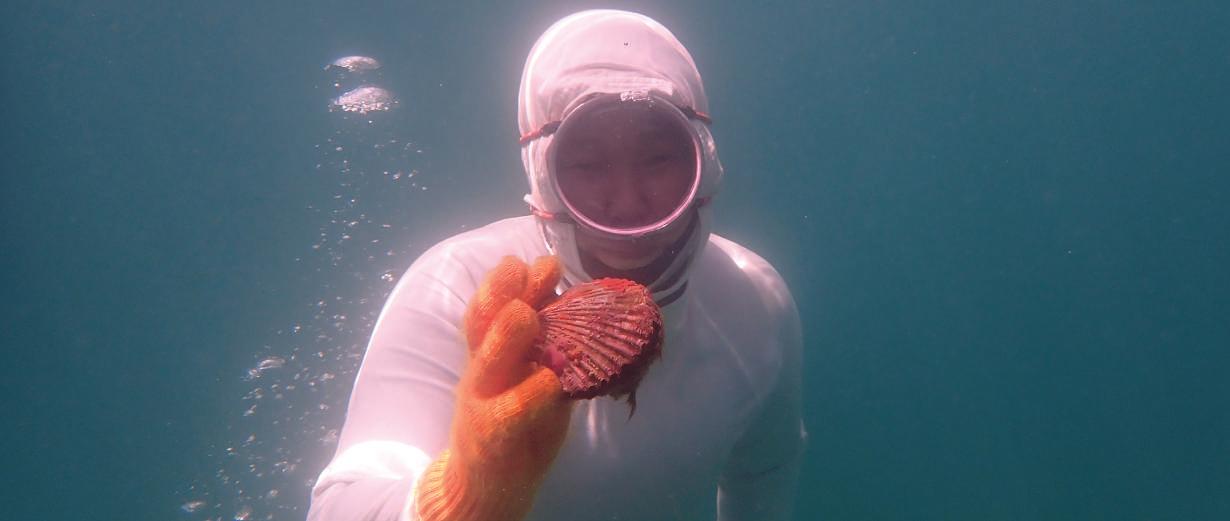
The tour runs from April to late November and requires a minimum of two participants. It costs ¥33,000 for the experience including boat fare, wetsuit rental, English translation and insurance.
The best way to get Ago Bay is by taking the Kintetsu Limited Express train from Nagoya Station to Kashikojima Station (90 minutes). There are several hotels nearby. To book your experience, visit miescape.jp/en v
NEARBY ATTRACTIONS
OSATSU AMA CULTURE MUSEUM
Further north along the Ise Bay coast in Toba is the Osatsu Ama Culture Museum. While small, this museum celebrates the heritage of ama divers from the local Osatsu Region and is a must visit for those interested in Japan's ama diving tradition. Admission is free.
Web: osatsu.org/amabunka
TOBA SEA FOLK MUSEUM

This museum preserves the knowledge, history and antique equipment of the region’s fishing traditions and culture including ama diving. They also host workshops, talks and animal identification at nearby tide pools. Admission is ¥800 for adults and ¥400 for children.
Web: umihaku.com
MIKIMOTO PEARL ISLAND
Also located in Toba, this island is an iconic destination known for its pivotal role in the history of pearl cultivation. Visitors can explore the pearl museum, purchase pearl jewelry and see a demonstration of the ama divers in action.
Admission is ¥1,650 for adults and ¥820 for children.
Web: mikimoto-pearl-island.jp/en
14 | TRAVELER
The EpicNorthern Tip OF THE MCT

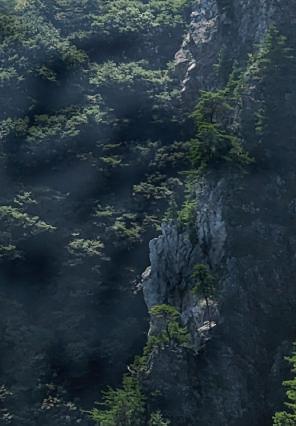 BY QUINLAN FARIS
BY QUINLAN FARIS

Hiking the entire one thousand kilometers of the Michinoku Coastal Trail (MCT) can take about two months. Yet if you only have saved up a couple weeks of vacation time, don’t worry, some of the most adventurous, breathtaking spots aren’t too difficult to access. You can easily get your fill in just a few days—if you target the right sections. First, a bit of background about the creation of Japan’s newest long-distance nature trail.
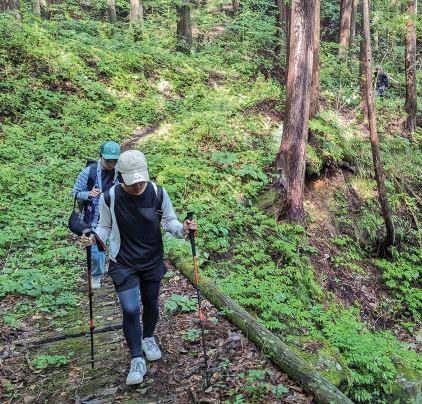



Autumn 2023 | 15
Autumn | 15
After the Great East Japan Earthquake and Tsunami in 2011, the Japanese government funded a number of initiatives to rebuild the coastal areas while promoting sustainability. In 2013, several parks were merged to create the Sanriku Fukko National Park. It spans 28,537 hectares (110.18 square miles) along Japan’s northeastern coast. A trail was planned that would start at the northernmost point of
the park in Hachinohe, Aomori, traverse the southern tip in Kesennuma, Miyagi, then continue all the way down to southern Fukushima.
The MCT officially opened in June 2019, but almost immediately suffered a severe setback when super typhoon Hagibis struck in October that same year, causing landslides and making several parts of the trail impassable. It was more than a year before all the damaged areas were completely repaired. Since then, there hasn’t been any problems, and I’ve been guiding hikes along it since Japan’s borders reopened in October 2022.

The northern part of the trail is wilder, running up and down rugged coastal cliffs, across hidden beaches connected by old hand-carved tunnels and through fishing villages before gradually giving way to civilization further south.




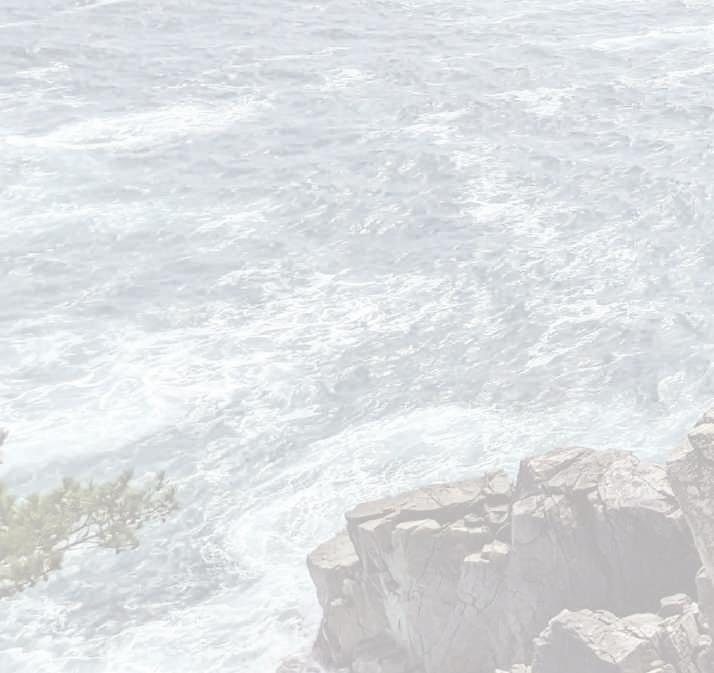
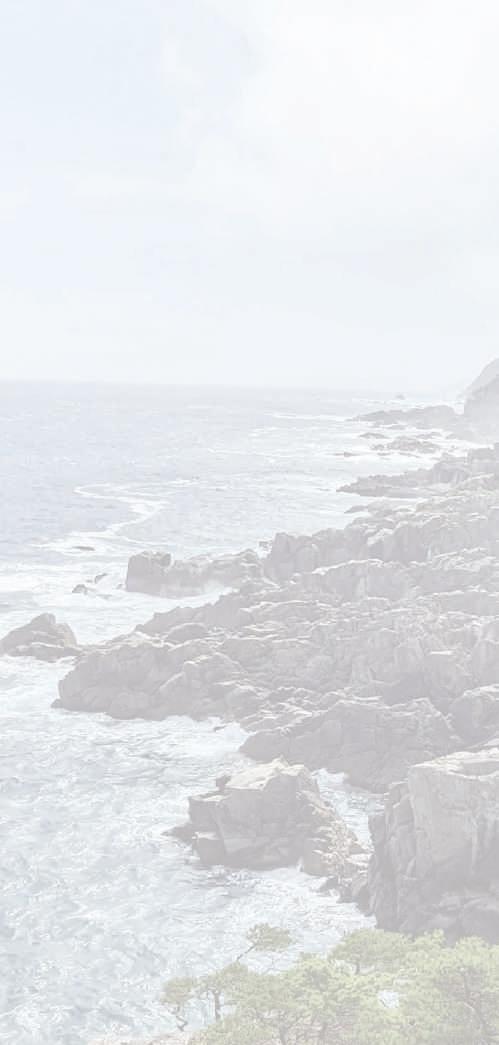
The southern section of the trail
allows hikers a more cultural and historical experience as they cross through Miyagi and Fukushima prefectures. If you only have a brief time to explore the trail—and stunning views are a priority—I highly recommend the northernmost section for a few days of hiking.
Start your adventure at the northern trailhead at Kabushima Shrine in Hachinohe.
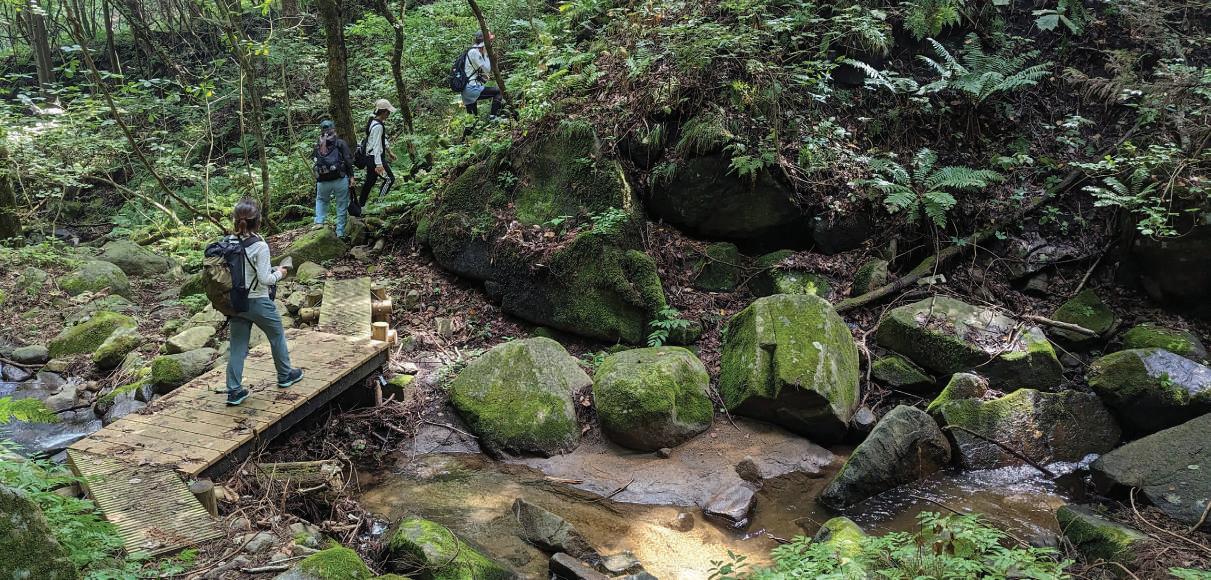
If you don’t have a car, take a local train from Hachinohe Station to Same Station then walk to the shrine. In addition to being a sacred shrine where locals pray for good luck for business and successful fishing trips, it’s the best place in Japan to see nesting blacktailed gulls. There are so many, in fact, the shrine lends out umbrellas at the entrance to protect against gull droppings. (Be aware that if one does happen to hit you, you can get a free wooden amulet with your name, stating you were “blessed” by the birds.)
From Kabushima Shrine, walk south and you’ll get to Osuka Beach. The beach has been designated as one of Japan’s Top 100 Beaches (Japan loves a good top 100 list), and features “crying sand,” which makes a high-pitched noise when you walk across it barefoot. This is a great place to take off your shoes and let the waves lap over your ankles as you stroll—or better yet, stop for
Later you’ll reach the Tanesashi Coast, offering a gorgeous panoramic view of both the rocky coast and a beautiful natural grassy lawn where horses used to graze. The campsite here is fantastic, with barbecue areas, public restrooms, a fire pit and room for 250 tents (tent and

blanket rentals are available). Stop here for the day or, if you’d rather hit a hotel, finish your first day with a casual, 10-kilometer walk at Okuki Station.
After this little warm up is the grand adventure. The most difficult section of the entire 1,000-kilometer trail are the glorious coastal cliffs of Tanohata. You could start this segment in the village of Fudai, which was spared from the 2011 tsunami by the impressive foresight of the mayor who, in the 1980s, built a 15.5-meter seawall, higher than was deemed necessary at the time. As a result, the town was mostly untouched by the tsunami while other fi shing communities just to the south (but with lower seawalls) were devastated.
This section of the hike weaves through forests, across streams, up and down steep slopes and roughly made stairways to glorious viewpoints at the top of the cliffs and hidden beaches below towering rock formations. It is not for the light of heart or weak of knee. While you can break it down and pinpoint certain




Web Connection
sections instead of attempting the entire (roughly 30-kilometers) hike, to reach many of the most impressive areas requires climbing and descending steep hills multiple times.
One of the highlights is an area with two long hand-carved tunnels, devoid of light and home to bats, that open onto a secluded beach that’s perfect for a lunch break or playing in the waves. A little past this area you’ll reach Aketo, where along with the ruins of a seawall destroyed in the 2011 tsunami, there is a beach, campsite and shower facilities for hikers. If a hotel is more your style, continue on to Hotel Ragaso just a short walk to the south, right on the coast.
If you don’t have time or aren’t inclined to hike for an entire day, but like the sound of hand-carved tunnels and secluded beaches, then I recommend just heading for the Unosu Cliffs in Tanohata. From the parking lot you can take a very short (900 meters), but steep, hike down to a gravel beach and then north through another little tunnel into a hidden
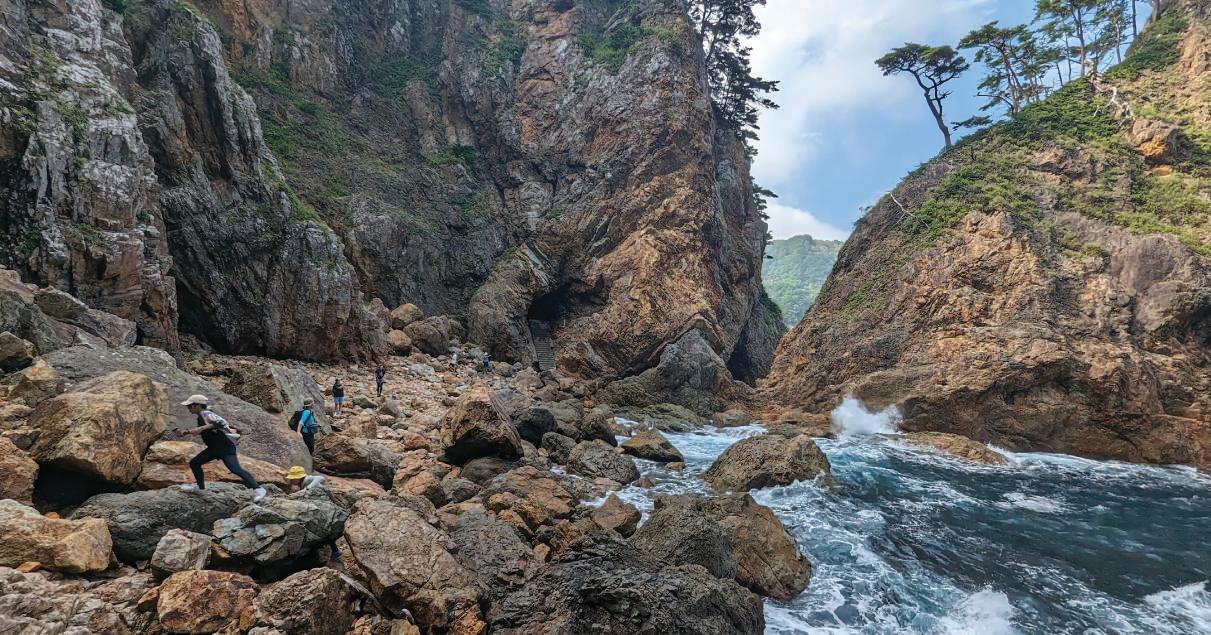

sand beach below towering 200-meter cliffs. There are four sections of tunnel here that provide access to secluded sections of the coast below the cliffs. You’re almost guaranteed to have them all to yourself, as the maps provided by the park service mark that area as impassable (because of sunken ground) and offer a detour along inland roads. During low tide you can usually go all the way across, but even when the tides are higher, it’s still worth seeing even if you have to go back the way you came. (Just be sure to approach it from the Unosu Cliffs and head north.)
I highly recommend hiring a guide to take you along the Michinoku Coastal Trail. It is definitely possible to do it alone (especially the first section near Kabushima Shrine and Tanesashi), but with the more diffi cult or remote sections, you’ll have a much better time with a local guide leading the way. This area has a rich history, and learning about local flora and fauna, folklore and the events around the 2011 tsunami will deepen your appreciation of the area. v
Aboutthe Author
The Michinoku Trail website has some great details on the northernmost segment of the trail as well as the entire MCT. Web: michinokutrail.com/michinoku-tanesashi-coast
Google Map Links
Kabushima Shrine (starting point): goo.gl/ maps/8aoUyWViJVfwXoR37
Tanesashi Campground: goo.gl/maps/5vPcAAYwZjh9i2wM8
Fudai Seawall: goo.gl/maps/CyY8LgR86SJVDs986
Aketo Campground: goo.gl/maps/11ot8nK7fePTo2Mi8
Unosu Cliffs: goo.gl/maps/hDC1mEK6FberPR9U8
Quinlan Faris is an adventure guide, avid hiker and YouTuber who hails from Madison, Wisconsin. His journey took him to Japan in 2000. After a decade in Tokyo, during which time he took multiple backpacking trips to India and Nepal, he moved north to Iwate. You’ll most likely find him up a local volcano, foraging for wild vegetables or fighting a bear (probably happened). He runs a small AirBnB out of his house in Morioka. Follow his adventures on his YouTube channel, "Go North Japan” at youtube.com/c/GoNorthJapan
Autumn 2023 | 17
Life on the Road in Japan
BY CÉLINE PASCHE | PHOTOS BY XAVIER PASCHE

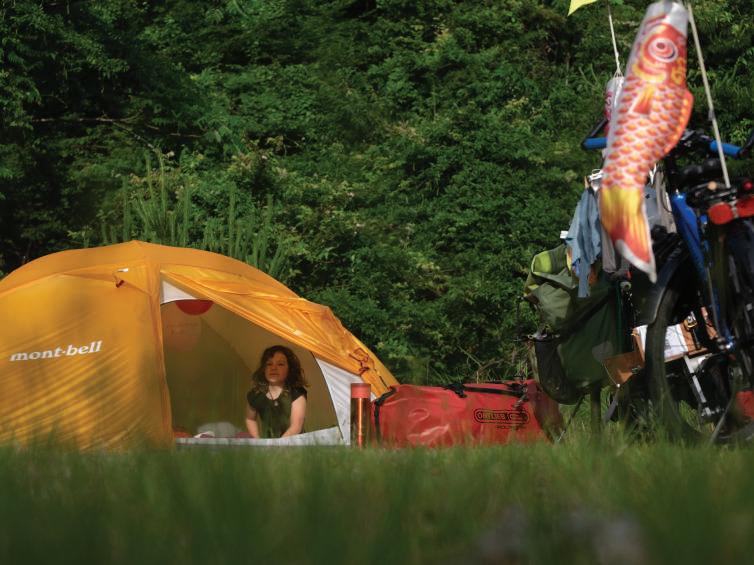

18 | TRAVELER
Our family—Xavier, myself and our daughters Nayla and Fibie—have been cycling across Japan from Tottori to Hokkaido. We are Japan Eco Track Ambassadors giving talks along the way and sharing our story. Once we finish our journey from Tokyo to Osaka through Nagano, we will have ridden approximately 6,000 kilometers. Here is a glimpse of our life on the road.
TOTTORI AND FUKUI
We began our Japan adventure in Tottori while joining our first Sea to Summit event, a series of human-powered races organized by Montbell. After kayaking and cycling, our family reached the top of Mt. Daisen. “Despite the strong wind, the view was incredible,” notes Nayla.
It was an intense start as we recall the mountainous climbs along the coast. The view on the bays and the charming little fishing villages were the reward. The delicate, sweet smell of flowers emanated from the lush vegetation as we reached the top of each pass.
Living outside every day and sleeping in a tent means we experience all kinds of weather. Typhoon Mawar sent a depression over Japan that led to various alerts for heavy rains, landslides and wind surges.
“We definitely tested the waterproofness of our tent!” laughs Xavier. The tent was floating on puddles, but we were ok. The next morning we celebrated the sun, not only because it dried everything, but the sky was so intensely blue. Nature was vibrant, and the green of the forest seemed even more radiant.
In Fukui Prefecture, we passed the foot of Mt. Haku. Suddenly, we discovered a magnificent waterfall. It was about 20 meters high and as soon as Nayla saw the bamboo ladder to the water, she started
to undress. “Let’s go for a swim in the waterfall!” she exclaimed at the top of her voice.
We then rode the valley deep into the mountains until we reached the Kuzuryu River. The gorge cuts through the black vertical rock walls covered in dense forest. We arrived in a special place, surrounded by mountains, vegetation and the meandering river. This was where we pitched our tent. The turquoise-blue river was an invitation. In no time, we were swimming in the river. The songs of birds, sometimes melodious, sometimes shrill, alternated with the melody of the rain.
ISHIKAWA
In Ishikawa Prefecture, we were welcomed by the “Great Cedars of Kayano.” We wondered in front of these 2,300-years-old Japanese red cedars. Our two daughters were so excited to see the base of the trees were more than ten meters in circumference and three meters across! They entered the sanctuary with sparkles in their eyes.

This is how our daughters cycle every day. Our ten-year-old, Nayla, rides every kilometer on her own. Fibie (six years old) can either cycle or be on the tandem bike system. But really they don’t cycle for the rewards, they cycle out of wonder. For us, every day is unique, never knowing how the day will unfold. There could be
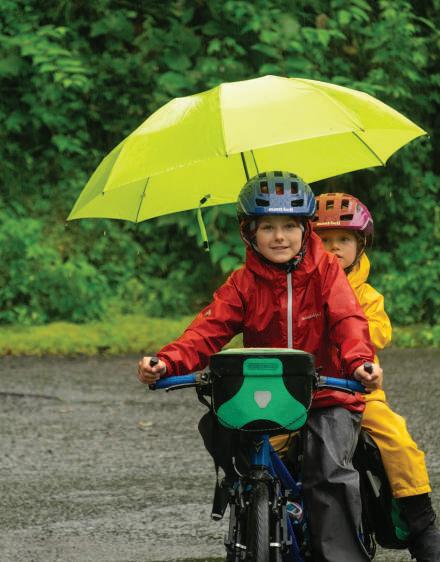
a river to swim in, an interaction with locals, an animal we discover. Our life is full of surprises. Some days can be hard, or boring, then suddenly we receive something that is more incredible than what we could imagine. On this day we witnessed the sugi trees in Kayano and then dolphins jumping near Noto-jima. This is how Nayla and Fibie nourish their trust in life and their motivation to keep on going. Wonder is what makes the difference.
In Noto Peninsula, we cycled eight kilometers on the beach. We all tried to take our hands off the handlebar while riding in front of the waves. Reaching Shiroyone Senmaida, we were surprised to see the rice terraces, amazed by the elegance of all these shapes, and the reflection of the light green rice plants in the water.
TSUYU —RAINY SEASON
Arriving in the port town of Himi in Toyama Prefecture, we were stunned by the breathtaking views of the majestic 3,000-meter Tateyama Mountains towering above Toyama Bay. “The summits were piercing the clouds, which made them even more impressive.” recalls Xavier.
Riding along the coast, we could enjoy the fresh breeze as well as the amazing view of the sea. This is one of many

Autumn 2023 | 19
Autumn 2023 | 19
reasons Japan is special. There aren’t many places in the world where the roads follow the coast so close that you can hear the sounds of the waves and even spot some fish while riding.
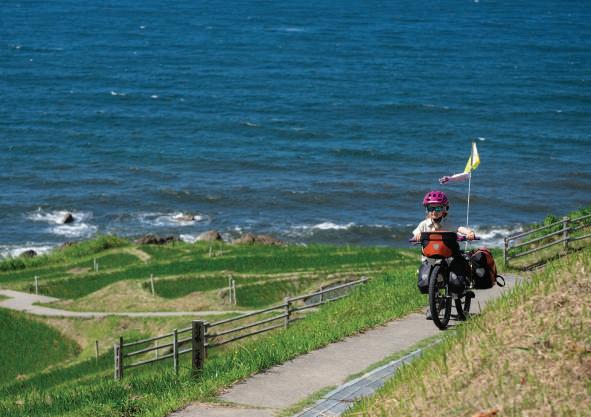
Our arrival in Toyama also signaled the advent of tsuyu —Japan’s rainy season. We cycled under pouring rain; sometimes it was hard to even see the road! It was very difficult because we were still camping. Keeping a few shirts dry was the challenge and as soon as we had a little bit of sun we had to dry everything out.
We climbed 1,000 meters in elevation in heavy rain to reach Mt. Madarao. There we were welcomed by Mayuko and Mark Stahnke. It happened a few times along the way, locals opening their doors to welcome us. We learned to make soba noodles with Ariya-san and had the chance to discover the numerous hot springs in Nozawa Onsen—and even boiled some eggs in the onsen water with Chris Hinds. We enjoyed standup paddle boarding in Teradomari with Kimura-san. We were really touched by the generosity of the people along the way. One day we also received a bag of apricots from a stranger. “It was so oishii,” announced Fibie.
TOHOKU HEAT AND MATSURI
Entering the heat of summer, we had the chance to discover some festivals like the sand statue matsuri in Mitane, Akita, as well as hanabi (fireworks) with other Japanese children. It was so hot, we would wake up at 5 a.m. to the song of the cicadas and start cycling early in the morning. Despite this, we spent long days in the suffocating heat, sometimes with little shade to protect us.
In Yamagata, we walked the stairs to reach Yamadera Temple. We were deeply moved by the beauty of this mystical place. From one spiritual place to another, we hiked to Gassan, the mountain of rebirth. It was at this point we took part in our second Sea to Summit event.
“I loved climbing it (Gassan) and playing with the dragonflies at the top,” says Fibie. Entering Akita Prefecture, we had
problems with the tire on the trailer and then the inner tube. We ran out of spare tubes and Xavier had to find a solution. It’s a 12-inch tire, so it’s very hard to find in Japan. We couldn’t buy one without placing an order. In the end, Xavier took a 20-inch inner tube and folded it in half. It worked! Then, with the help of Schwalbe Tire in Germany and PR International in Nagoya, we received new tires 300 kilometers further down the road.
We then saw Mt. Iwaki standing out against the horizon, a sumptuous stratovolcano overlooking apple and pear orchards that symbolize Aomori Prefecture. We were about to arrive in the city for the famous Nebuta Matsuri, one of Japan’s most famous summer festivals. Here in northern Honshu, the festivals are renowned for their passionate atmosphere. This was the first time in three years the festival had been held. The celebration was gigantic and the atmosphere incredible. Illuminated floats were fascinating and sometimes frightening, and the sound of the taiko was thrilling! Nayla and Fibie danced and sang all evening to the frenetic rhythm of “Ra-se-ra !” and were still singing a few days later.
CYCLING IN WILD HOKKAIDO
We simply loved cycling in Hokkaido. Nature is powerful, like the bears that inhabit the land. We had the chance to camp in amazing landscapes, in front of magnificent lakes and facing high summits like Mt. Yotei. We were thrilled to hike to the top of Asahidake, the tallest peak in Hokkaido where we participated in our third Sea to Summit—Nayla taking part in the entire event—kayaking, cycling and reaching the summit on the same day.
“I really like Montbell’s Sea to Summit. It feels like I am part of a big family,” she explains.

It was the first time we hiked to the top of an active volcano—but a few weeks later we reached our second volcanic peak, Mt. Tarumae. “Both places exude a powerful energy,” notes Xavier.
Our sacred place in Hokkaido is Lake
Kanayama. We stayed there a few days after having been there seven years ago. It was there that our connection with Japan began.
BACK TO HONSHU
After a wonderful welcome in Tomakomai, we took the ferry back to Honshu pulling into port in Sendai. The next part of our journey will first take us to Tokyo and then Osaka through Nagano. Along the way, we will continue to give a number of talks that are open to the public. We hope to inspire people to go outside and enjoy the great outdoors. It is so important for the development of children. Nayla is cycling the entire route and it is an incredible challenge, especially with the talks along the way. She has already logged 3,000 kilometers in Japan, through mountains, over passes, beneath the rain and sweltering heat. She is still excited to ride, because it is a way to nourish her sense of wonder.
Our daughters know what it means to wonder because they don’t consider the world as conquered nor do they take it for granted. Rather they receive it as a gift. Maybe it is your turn to go and explore Japan’s amazing nature with wonder—and take your children along for the ride!
Follow the Pasche family on their journey or, better yet, meet them along the way for one of their Eco Track talks in Tokyo, Mie, Nara or Osaka. You can support their mission by purchasing their photography book form Montbell stores and the Montbell online store or by making small donations to plant seeds of hope through their website. v
Web Connection
Itinerary and Talks: ylia.ch/talk-1/talk.html
Instagram: instagram.com/nomadfamilybybicycle/ Facebook: facebook.com/FamillePasche
YouTube: youtube.com/channel/
UC7qR1BWEKWJrSHaudLEbPhA
Web: ylia.ch
20 | TRAVELER
ALL Aboard Niigata’s Sake Train



 BY SAMANTHA MYTHEN
BY SAMANTHA MYTHEN

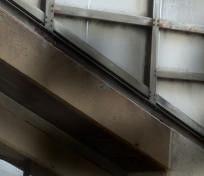
Japan is famous for its super fast bullet trains, where cities and the countryside blur into one—the final destination, hundreds of kilometers away, reached in mere hours. Yet, for a more meandering journey, head to Niigata for some of Japan’s finest sake and intoxicating views. It’s the perfect pairing on Niigata’s Sake Train.
The Koshino Shu*Kura is a three-hour sightseeing train where you get to taste Niigata sake (Japanese rice wine), also known as nihonshu, and enjoy a meal made of locally sourced ingredients. This sake train is one of JR East’s special “joyful” trains. There are 44 throughout Japan and each focuses on a speciality of that region.
Niigata is particularly famous for its sake. This is in part due to the “snow country’s’" ideal rice production environment. Niigata is home to pure water and is Japan’s largest producer of rice. Rice and water being the two essential ingredients for making great sake, it’s no surprise Niigata produces excellent nihonshu
The train’s route takes you along the coastline, oft blasted by wintry Siberian winds, and across inland plains where you can view the seasons through the shades of rice production, with the Japanese Alps guarding the horizon.
Depending on what time of the year you take the sake train, the scenery outside will change. In autumn, gold and bronze hues will color your travels and you may even catch a glimpse of white blanketing the highest points of the mountainous landscape. I boarded the Koshino Shu*Kura on a humid June day during Japan's rainy season, a gray drizzle blurring the line between sky and moody sea.
There are three routes to choose from on the sake train. There is the traditional route between Joetsu-Myoko and Tokamachi stations, or you can disembark at the winter resort town of Yuzawa or further down the line in Niigata City.

I boarded near my local station in Naoetsu along the route in Joetsu City. Passing through the three carriages of the 1970s train, I notice one is set out in a traditional seating arrangement where fellow sake -lovers chat and mingle. The middle carriage is open and a couple of

jazz musicians serenade you as you take part in a sake tasting at standing tables. The final carriage is where you spend most of your journey. The elaborately decorated carriage features interiors are specifically designed to maximize your experience. Seats face towards the passing view, framed with extra wide windows. I take my seat in this grand stand arrangement as the Sea of Japan fills the window in front of me.

Autumn 2023 | 21
There are more than 90 licensed sake breweries in Niigata and a changing selection of sake will be served to you along the journey. My first sake sip was of a sparkling variety called Black Firework from Nagaoka-based Hakuro; it was light and delightful setting the vibe for the journey to come.
A bento -style meal accompanies the sake tasting. This also changes depending on seasonal produce and local delicacies. Imagine eggplant tempura, steamed chicken
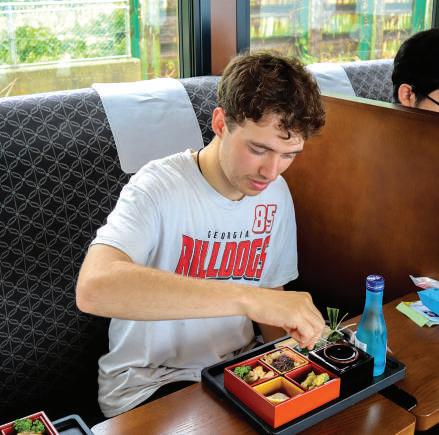

ESSENTIAL INFO

Tickets and When to Go
pieces, broiled salmon and mochi to finish, all with a generous serving of dry, still sake to wash it down.
Just under an hour into the journey, the train stops at a scenic viewpoint along the coast. I sip on my fourth cup of sake, this one from Kaganoi Sake, and wander out to snap a photo of the white-capped sea.

A chilled daiginjo , brewed by century-old Kimino Shuzou Brewery exclusively for the sake train awaits as I return to the carriage. The train curves around the valleys of the Hida and
Echigo mountains. Knowledgeable attendants proudly show you each sake bottle before pouring, ensuring photos can be taken and curious questions answered before sipping.
Bright green foothills, golden tambo (rice fields) and a soft buzz within herald the end of the line. A train journey is usually about simply getting from point A to B. But the sake train adds the views—and tastes—of Niigata, and there is something special about tasting the local tipple while looking out upon the rice used to make it.
Shinkansen to Joetsu-Myoko Station and board the sake train. You can then stay in Niigata City, which offers an array of accommodation to suit varying budgets.
For about ¥8,000 you can reserve a seat in the rear car. This includes a light meal, a ticket to disembark at any station along the journey and sake to taste. The journey takes two-and-a-half to three hours depending on which station you embark and disembark from.
The sake train is covered by JR Pass and a variety of other JR East regional passes but onboard drinks and food must be bought additionally. Seat reservations are recommended to be made at least three days in advance on weekdays and at least 10 days during weekends and public holidays. Reservations can be made online or at any JR ticket window in person. The train runs from spring until late autumn.
For those traveling from Tokyo, take the Hokuriku
WEB CONNECTION:
JR East: jreast.travel/joyfultrain/shukura.php
JR East: jreast.co.jp/multi/en/joyful/shukura.html
JR Pass: m.jrpass.com/blog/koshino-shu-kura-the-saketasting-train
Reservations: jre-joyful.com/
Hakuro Sake Brewery: niigata-sake.or.jp/en/kuramoto/ hakuro/
Tamagawa Sake Brewery: niigata-sake.or.jp/en/ kuramoto/tamagawa/
Niigata Sake Brewers: niigata-sake.or.jp/en/
SADO ISLAND SIDE TRIP
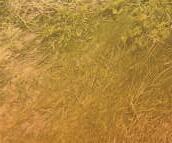

Sado Island lies off the coast of Niigata Prefecture in the Sea of Japan. It’s a land of gold mines, blooming wildflowers and booming sounds of taiko drums. Japan’s fifth-largest island has 280 kilometers of coastline with sandy beaches and towering cliffs. It is also home of Kodo, Japan’s most famous taiko group, and their annual Earth Celebration.
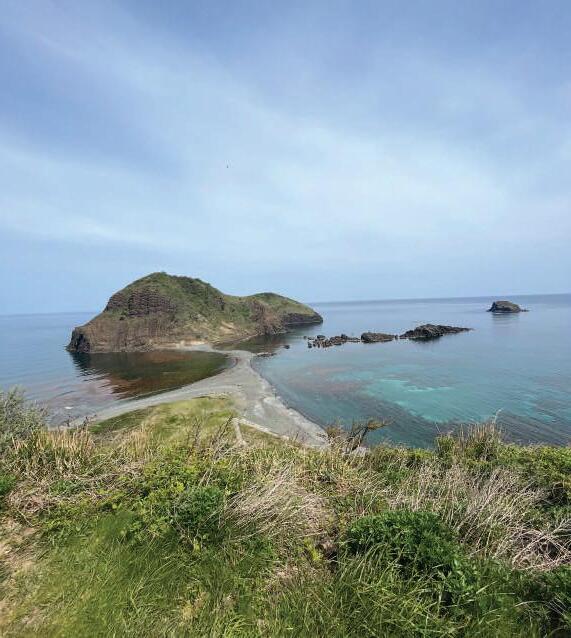
My partner and I decided to hitchhike around Sado Island’s stunning coastline, camping at beachside locations where we watched the sun dip into the horizon’s arms every evening. It was never a problem to get from one location to the next, as both locals and other islanders alike were all eager to help me out. One kind visitor, a university lecturer from Nagoya, visiting the island for the first time himself, drove us two hours up the coast to the island’s northern tip, where a vista of golden yellow Tobishima day lilies carpeted the cliffs.
On day two of the journey we visited Tatatokan and experienced the mighty power of taiko firsthand. I stood in awe watching the Kodo ensemble perform just days later at the Earth Celebration, remembering the strength needed to pound out the booming rhythmic music. The best part of the Earth Celebration was seeing the glee of people of all ages, cultures and genders as they got to take bachi in hand and try out the ancient musical art form.
Sado’s lush scenery was the perfect backdrop for the celebration. The sun lit up each stage, while a gentle sea breeze kept everyone cool. Ogi Town hosts the big concert each night and other smaller events and performances happen throughout the weekend. We loved the impromptu performances, where locals and festival goers participated in jam sessions led by Kodo, weaving different cultural musical expressions together.
The first Earth Celebration was held in 1988 as “an experiment in strengthening the community ties of all earth’s inhabitants” through art and music. An estimated 23,000 people from around the world gathered on the island to enjoy the event in August this year.
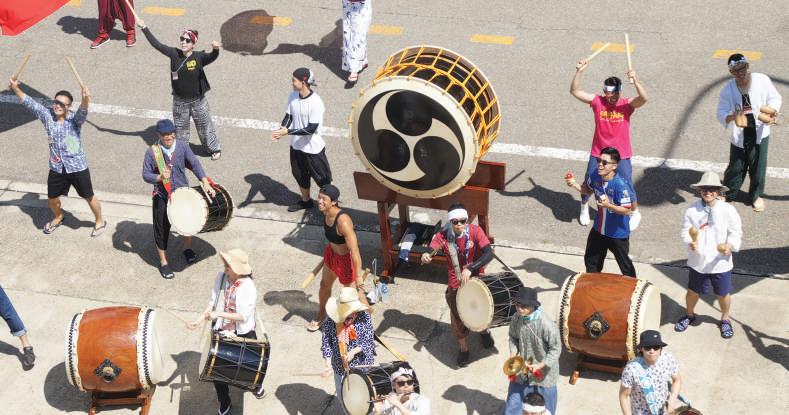
You can take a car (or bike) on the ferry from either Naoetsu Port in Joetsu to Ogi, or from Niigata City to Ryotsu further north. Sado has a series of wellconnected bus routes as well along with camping spots, hostels and ryokan to stay. v
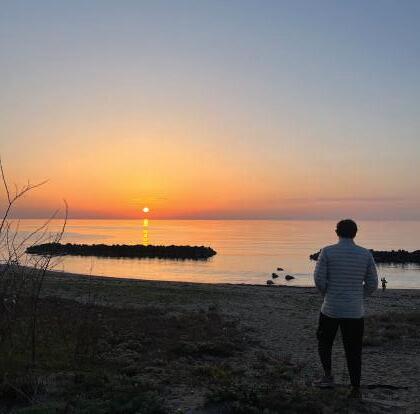

WEB CONNECTION
Sado Island Tourism: visitsado.com
Earth Celebration: earthcelebration.jp

Autumn 2023 | 23
Cycling the Kuma Valley

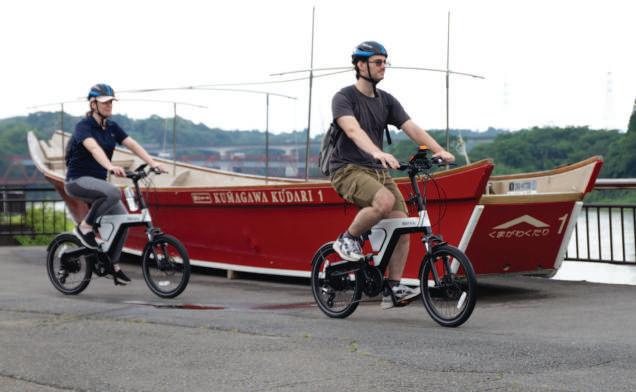












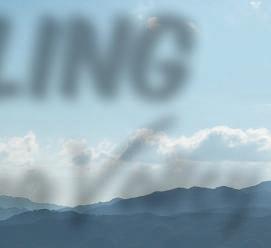



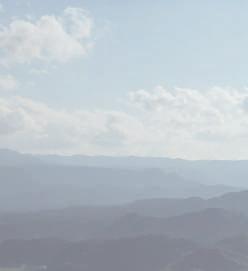
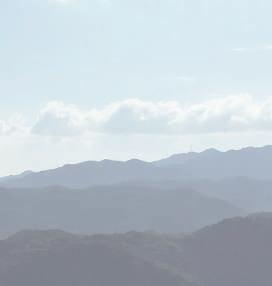
 BY KATHRYN WORTLEY
BY KATHRYN WORTLEY
The Kuma River is the heart of the Kuma Valley with Hitoyoshi, a historic castle town, serving as the valley’s main hub. The vast body of water provided a natural defence to the fortress when it was first built in the 12th century. It became a strategic transportation hub in the 17th century, leading to the economic development of the region.
Today, as the largest waterway in Kyushu and one of the three fastest rivers in Japan, the Kuma River plays a key role in supporting Hitoyoshi’s tourism and agriculture industries. Visitors flock to journey along the transparent water, either onboard a leisurely cruise or navigating
the rapids on a raft. Still others seek out the town’s renowned culinary culture, supported by its pure water. The Kuma River’s 80 tributaries and vast watershed cover one quarter of the prefecture, sustaining vast fields of rice and green tea as well as orchards bearing fruits and nuts.


Navigating this environment by bicycle to uncover the area’s highlights is now easier than ever thanks to new half and full-day cycling tours that depart from the center of Hitoyoshi. Both provide scenic views past picturesque shrines and between lush fields, often to the sounds of rushing water or birdsong. Guides offer background to historic spots and introduce
some of the town’s key producers in the world of food and drink as riders indulge in gourmet tasting opportunities at local businesses.
EATING SEASONALLY













After a short climb past row upon row of green tea bushes, Mie Miyazaki is waiting patiently on a small plateau to serve a selection of ice-cold green tea cocktails and homemade sweets. A green tea farmer who, with her husband, maintains 4.5 hectares of green tea orchards, Miyazaki enjoys using the pair’s leaves to create her signature combinations for visitors.
The farming is hard, she says, but the




































Explore the basin of Kyushu’s longest river with new e-bike tours in Hitoyoshi’s Kuma Valley.
harvest—delicious bancha (tea) varieties picked throughout the year—is worth it. On hot days, she combines green tea with soda water and pairs it with green tea panna cotta while cooler days see her preparing cups of steaming hot green tea and baked goods, all served amidst the gently rolling hills.
Another local producer is Setsu Honda, owner of Himawaritei, a riverside eatery specializing in local, home-cooked food. From her open-plan kitchen and dining area, which was destroyed and rebuilt when the Kuma River flooded in 2020, she explains her philosophy for cooking while outlining her menu, which changes daily.
“Eat according to the season, because those foods will taste best,” she says, gesturing to a series of wicker baskets piled high with tomatoes, green peppers, cucumbers, eggplants, pumpkins and sweet potatoes. “And do the best you can to avoid food loss,” she continues, as she opens her fridge to reveal jars of pickled and fermented foods: a nod to her qualifications in the field.

Honda treats riders to dishes such as thin eggplant noodles served in gazpacho and tempura-battered vegetables followed by konjac-style sashimi . All are suitable for vegans; she says her aim is to “bring people together through food.”
SEEING PRODUCTION
At stops along the routes, it’s possible to get a behind-the-scenes peek at the manufacturing methods of some of the most important ingredients in Japanese gastronomy.

In the former merchants’ district of Kajimachidori, a 93-year-old familyrun factory making soy sauce and miso is a reminder of Hitoyoshi’s commercial history. Staff at Marukawa guide riders on a tour of the unique 100-meter-long
and 10-meter-wide facility before introducing savory snacks like miso soup and shoyu -flavored rice crackers paired with green tea.
The nearby Fukano Brewery produces some 20 varieties of shochu (distilled liquor), including one made from local chestnuts, which are available for tasting after viewing the production area.

Tofu factory and shop Gankodofu also offers riders the chance to learn about its signature tofu, made using water drawn from an on-site well some 80 meters below ground. “We relocated the business here to get good water, and our manufacturing style has not changed. Most places use only machines but we focus on handmade tofu as much as possible,” says owner Yasutomu Makino, who operates the business with the support of five family members and 13 staff.
Makino and his team serve mouthwatering tofu burgers and a wide range of tofubased side dishes at the riverside below his property, providing a leafy setting for riders’ lunch.
HISTORY AND SCENERY
Active travelers interested in Japanese history and culture will also find some intriguing places to explore.
Hitoyoshi’s central shrine, Aoi Aso, is a registered national treasure and makes for an impressive stop; its imposing structure and immaculately kept thatched roof are a rare sight on shrines today. First built in 806, the shrine was developed and adapted over the years, including to accommodate the local clan’s redesign in the 17th Century to follow the ways of fusui , the name for feng shui in Japan.
Yamada Daio Shrine, which also
features a thatched roof, dates back nearly 1,000 years. Its main hall was constructed in the mid-16th century, making it one of the few shrine halls of its kind left in Kyushu.
Meanwhile, Maruoka Park offers spectacular views of distant mountains and the valley from its hilltop location above Hitoyoshi. The oasis is particularly beautiful in spring, when its plentiful cherry blossom trees create swathes of pink and white blooms, and in fall, when autumn leaves provide riders with colorful scenes in which to take a break. v
Getting There
Hitoyoshi is accessible via bus from Kagoshima Airport, with one transfer at Hitoyoshi IC Jokoguchi. There is also a bus from Kumamoto Airport. Kagoshima Airport is connected to around 20 destinations nationwide including Tokyo and Osaka.

Tours start at the Kawakudari Visitor Center, located in Hitoyoshi and about a five to ten-minute walk from most accommodation. The Yamae course is a 15 to 20-kilometer loop with 200 meters of ascent, and you can opt for the three-hour or six-hour tour. It stops at Himawaritei, Fukano Brewery, the two shrines and Maruoka Park.
The longer Sagara course ascends 260 meters and you can opt for the four-hour tour (20 kilometers) or seven-hour tour (40 kilometers). It stops at Mie Miyazaki’s green tea farm, Gankodofu with a riverside lunch and a shochu brewery. The tours run from September to June and include English-speaking guides, e-bike rentals and insurance. To book your experience or learn more, visit www.kumagawa.co.jp

Autumn 2023 | 25
2023 25
JAPAN TEA COUNTRY BY E-BIKE










Welcome to the Suruga region where unforgettable adventure and vibrant coastal charms await. This jewel of natural wonders in Shizuoka Prefecture lies on Japan’s central eastern coast. It’s an idyllic destination that beckons travelers to explore a plethora of captivating attractions and activities.


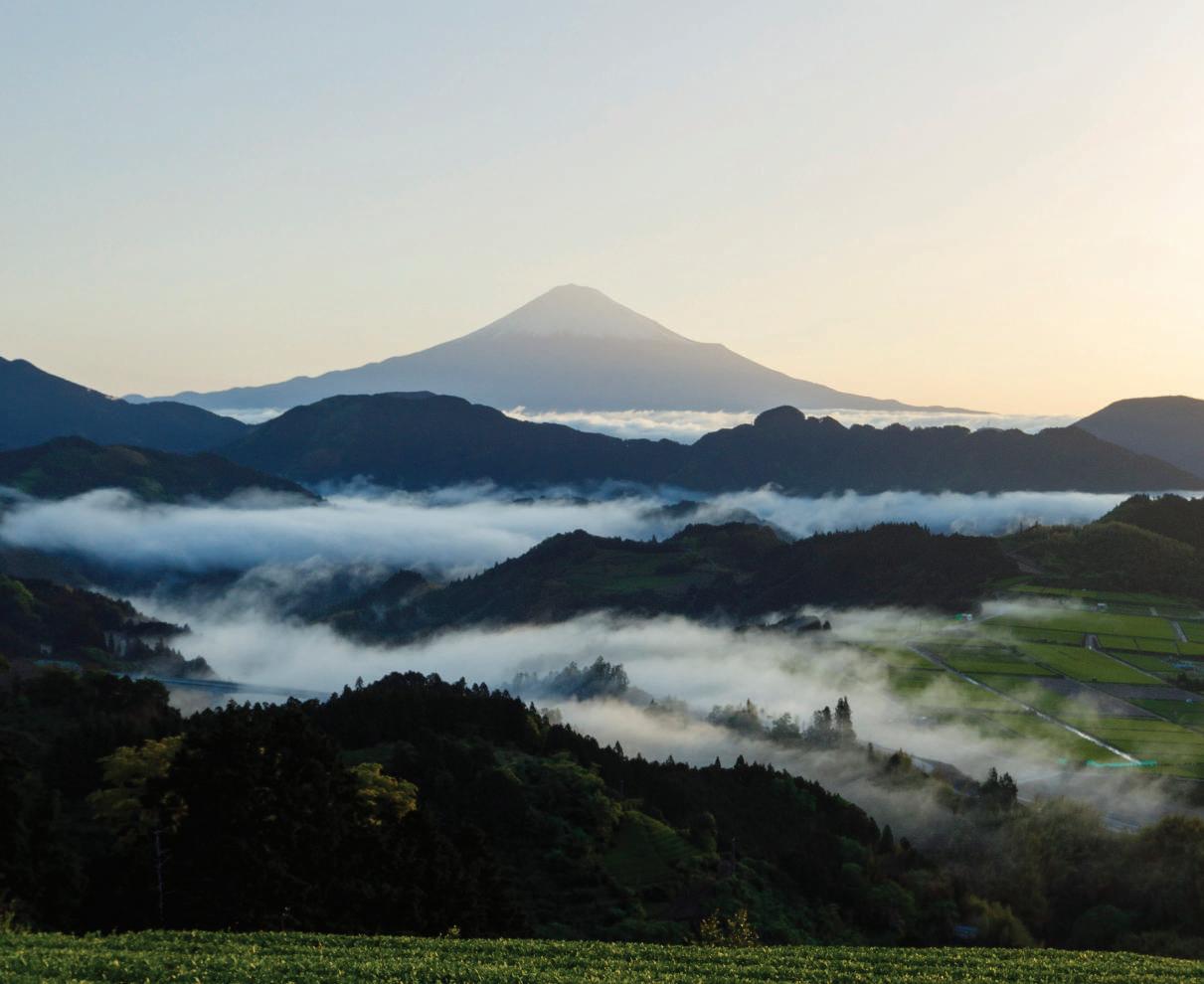
As the waves lap against the shores, adrenaline-seekers can indulge in thrilling




water sports like surfing and diving, while those seeking tranquility can bask in the sun-drenched beaches or unwind in the soothing hot springs that dot the region. For history enthusiasts, a visit to the ancient Nihondaira Plateau offers panoramic views and a glimpse into the area's rich maritime heritage at the Shimizu Port Museum. The proximity between the mountains and ocean has made this region
a flourishing Japanese tea and seafood production center since ancient times, and today continues to attract travelers seeking an outdoor escape and delicious cuisine.














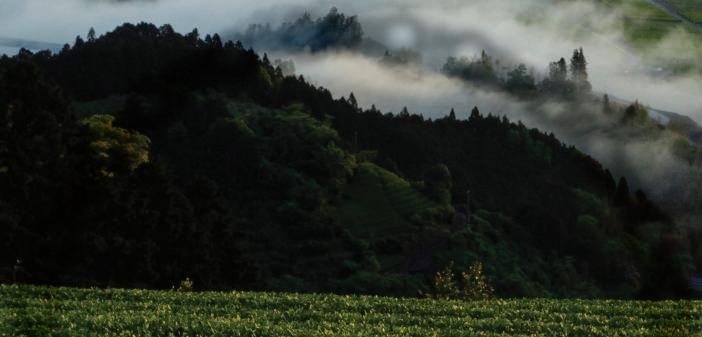


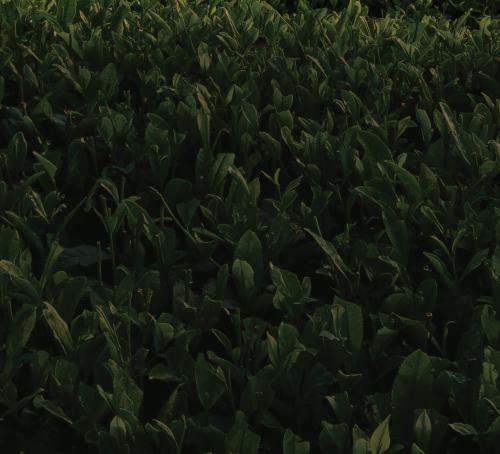

One of the best ways to discover the region is an immersive, English-guided e-bike tour. There are four recommended routes that showcase the best of Suruga from mountains to coast.
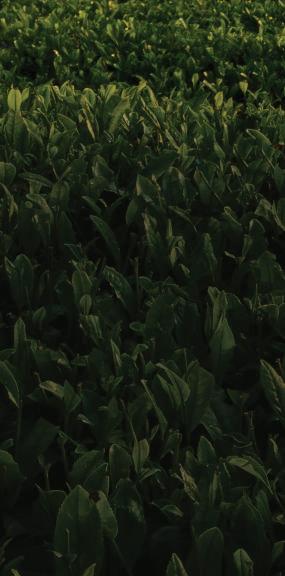
26 | TRAVELER
LOCAL TEA FARMS WITH VIEWS OF MT. FUJI
If you’re a fan of tea, Suruga is a must visit. It is said to be Japan's top green tea producing region. Cycle along the Okitsu River through hilly terrain and the quintessential Japanese landscape of tea fields and bamboo forests. This area is famous for producing ryogouchi-cha and a method of moderately obstructing the morning and evening mists and sunlight to develop a rich and refreshing fragrance.
The tour stops at Green 8 Cafe, which offers more than 30 types of tea including


their popular Japanese black tea, fukamushicha (deep steamed) and asamuchi-cha (lightly steamed). This stylish café is designed with recycled materials, furniture and driftwood. You can also enjoy your tea at a photogenic terrace built in the middle of a tea farm just a short walk away.

The next stop is a visit to Marujo Murakami Farm, a historic tea farm nestled 300~350 meters high in the mountains. On a good day, you’ll catch an impressive view of Mt. Fuji sitting on unkai, a sea of clouds and Shimizu Port to your right. This farm utilizes homemade, mainly organic fertilizers and minimal use of pesticides, and preserves traditional methods of cultivating and producing sencha (green tea). They’ve won several awards including Shizuoka Prefecture’s Governor’s Award and Japan Black Tea Association Award.
Duration: 3-4 hours
Starts/Ends at: JR Okitsu
Station
Minimum Participants: 4
Tour Fee: ¥16,500 (including tax, price varies depending on the number of people)
Included: Tea sampling at Green 8 Cafe, rental e-bikes

SURUGA COASTLINE AND HARBOR
This course is for seafood enthusiasts. Embark from Shimizu Port, which is famous for its frozen tuna landings, and enjoy a bowl of fresh seafood at the local fish market—Kashi no Ishi. This ichiba was one of the first markets in Japan to allow wholesalers to sell directly to customers Today, wholesalers still gather each morning to offer delicious, yet affordable, seafood to the general public. Enjoy strolling past lively stalls selling seafood, vegetables, green tea and citrus.

Next you’ll board the Shimizu Port “water bus” for Miho no Matsubara, a World Heritage Site. This is a scenic coastal area renowned for its sandy beach bordered by a picturesque pine
Duration: 3-4 hours
Starts/Ends at: JR Shimizu
Station/Mochimune Station
Minimum Participants: 4
Tour Fee: ¥12,500 (including tax, price varies depending on the number of people)
Included: Water bus fee, rental e-bikes

grove. Legend connects it to the tale of Princess Kaguya, who, before ascending to the moon, left behind her robe, which transformed into the pine trees. The area inspired the great Japanese poet Matsuo Basho, who composed a haiku about its beauty. It remains a popular destination for tourists and locals, offering stunning views, tranquil beach walks and a serene ambiance created by the swaying pine trees, sandy shoreline and the majestic sight of Mt. Fuji in the distance.
Ride along the Pacific Ocean Bike Path along the coastline, past sand dunes and strawberry fields before ending at Mochimune. Mochimune has recently undergone a redevelopment project that has resulted in many renovated properties, including a hot spring café and West Coast Brewing, a craft brewery that releases a new beer every week. Enjoy a refreshing drink at the taproom attached to The Villa & Barrel Lounge.
Duration: 3-4 hours
Starts/Ends at: JR Shizuoka
Station
Minimum Participants: 4
Tour Fee: ¥16,500 (including tax, price varies depending on the number of people)
Included: Tea sampling at Moriuchi Tea Farm, rental e-bikes
JAPANESE TEA HISTORY AT ASHIKUBO

Starting at Shizuoka Station, cycle past the historic Sunpu Castle Park in the city before entering the Ashikubo countryside. Ashikubo is steeped in history as it is the birthplace of Shizuoka green tea, producing tea for more than 800 years. It is said that during the Kamakura Period (1185-1333), a Buddhist monk named Shoichi Kokushi—who studied in China, brought seeds back and planted them here—made it the first place where tea was planted in Shizuoka. During the Edo Period, Ashikubo tea was the official imperial tea. Today this region is flourishing with a young generation of farmers.

Follow a gentle bike path along the Abe River and stop for a cup of sencha at Ashikubo Tea Works, a café that combines both traditional methods and modern takes on green tea. They offer a wide variety of tea drinks including lattes, frozen drinks, black tea and seasonal fruit.

Experience a traditional Japanese farmhouse at Moriuchi Tea Farm, where you can sample a comparison of teas from strong flavored to sweet and refreshing. This nine-generation farm has won high acclaim at several tea competitions.
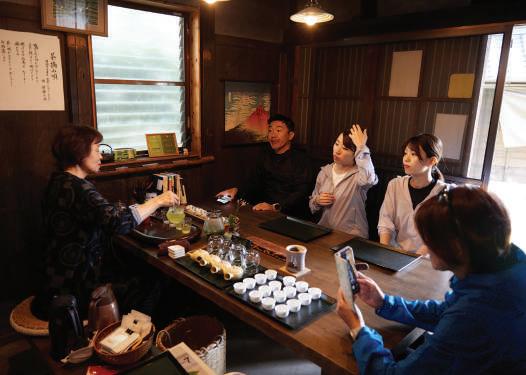

28 | TRAVELER
TRADITIONAL CRAFTS AND GYOKURO TEA

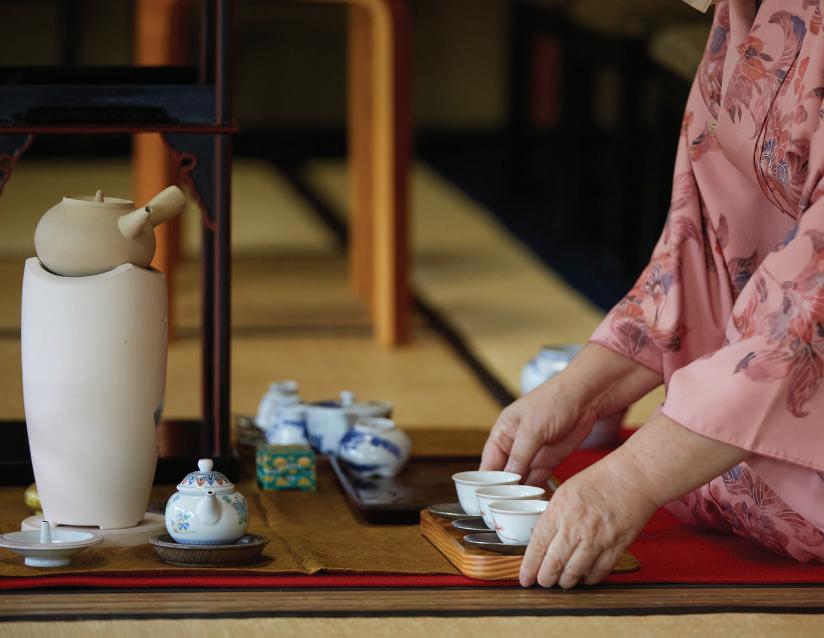
Gyokuro is an expensive, high-quality green tea known for its unique cultivation method and distinctive flavor. It is grown in the shade for several weeks before harvesting, which allows the tea leaves to develop a deep green color and a rich, umami taste. The shading process also increases the level of chlorophyll and amino acids in the leaves, resulting in a sweeter and more mellow flavor profile. It’s highly prized for its delicate, grassy aroma and smooth, velvety texture, making it a favorite choice among tea connoisseurs who seek a refined and indulgent tea experience.
This bike tour explores the Asahina District of Fujieda City, which is one of the three major gyokuro production centers in Japan

along with Uji (Kyoto) and Yame (Fukuoka). Start with a tea ceremony at Gyokuro-noSato, a Japanese garden and tea house called Hyogetsu-tei where you can enjoy sencha (green tea) and matcha (powdered green tea) using local gyokuro
Continue along the Tokaido Road, a historic and vital transportation route during the Edo Period, which connected Edo (present-day Tokyo) and Kyoto, and served as a significant pathway for travelers, trade, and cultural exchange. You’ll cycle through Meiji Tunnel at the famous Utsunoya-toge Pass and stop at Mariko-juku, one of the old post towns and rest stops on the Tokaido. Here, Sunpu-no-Kobo Takumi-shuku is one of Japan’s largest traditional craft workshops.

You can see and even try your hand at local bamboo crafts, dyeing, woodworking, lacquering, ceramics and other traditional crafts dating back to the Imagawa and Tokugawa periods. There is also a café serving a wide variety of locally sourced dishes and honey.
The tour ends at Mochimune Port at the aforementioned West Coast Brewing. v
Duration: 3-4 hours
Starts/Ends at: JR Fujieda
Station/JR Mochimune Station
Minimum Participants: 4
Tour Fee: ¥12,500 (including tax, price varies depending on the number of people)
Included: Tea ceremony at Gyokuro-no-Sato, rental e-bikes
Autumn 2023 | 29
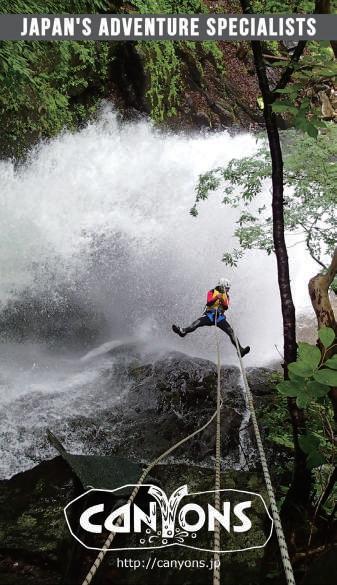








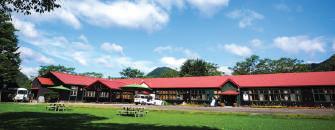





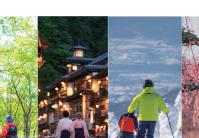





































































































Travel &Adventure
30 | TRAVELER www.bungyjapan.com Tohoku is Japan's Last Frontier—the true path less traveled. Hiking and specialized tours in North Japan. youtube.com/c/gonorthjapan GoNorth.jp
DIRECTORY
Travel &Adventure


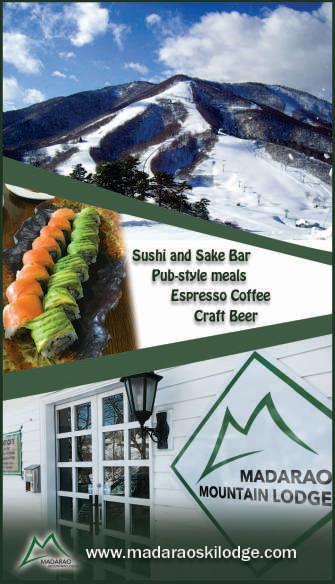

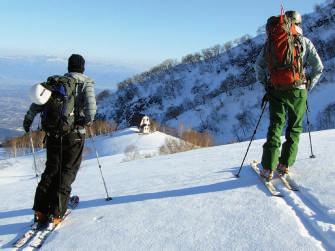

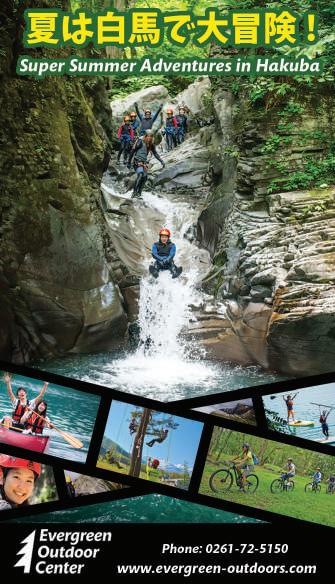
Autumn 2023 | 31
DIRECTORY
Travel &Adventure DIRECTORY


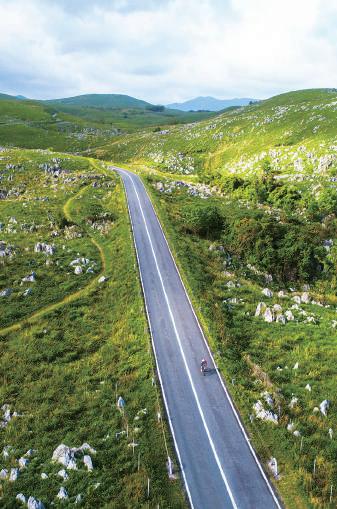





















info@happyraft.com
info@happyraft.com

0887 750 500 10-4 Iwahara Otoyo-cho
0887 750 500 10-4 Iwahara Otoyo-cho


























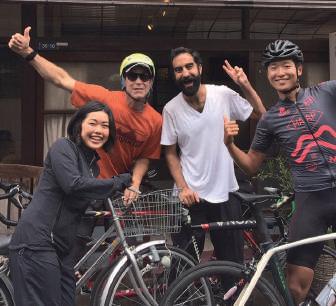
Nagaoka-gun Kochi-ken 789-0158
Nagaoka-gun Kochi-ken 789-0158
HappyRaft http://wwww.happyraft.com


























































HappyRaft http://ww .happyraft.com




32 | TRAVELER freewheeling.jp CELEBRATING HUMAN POWER AND INTRODUCING THE QUIET BACKSTREETS, BEAUTIFUL PARKS AND UNIQUE CULTURE OF TOKYO NOT FOUND ON TOURIST MAPS.
H
HAPPYRAFT S
UKOKI .

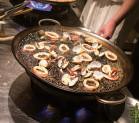

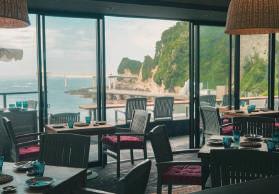












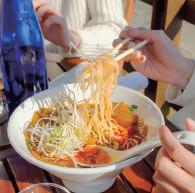


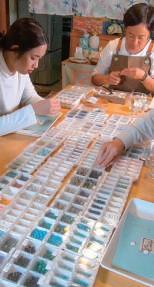







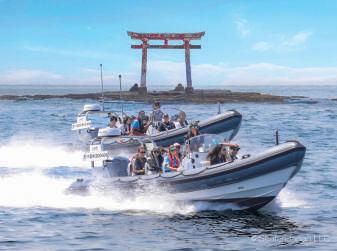




































Autumn 2023 | 33 EDEN SPA KATSUURA'S OCEAN VIEW SPA & RESTAURANT WWW EDEN-KATSUURA COM Oceanside spa and sauna Spanish-inspired restaurant Organic product store SPLASH GUEST HOUSE Boutique Acco m m o d a t ion r i g h t o n the water w w w . s p l a s h g u e s t h o u s e . c o m Surf board Rentals Surf Lessons BBQ & Pizza oven Boat Tours and more... Travel &Adventure DIRECTORY RAG TIME T R Y K A T S U U R A ' S F A M O U S T A N T A N M E N R A M E N BAR & RESTAURANT GOOGLE MAP A R I J E W E L R Y I N S P I R E D B Y YOU D E S I G N N E W SOMETHING A R I J E W E L R Y J U S T 1 0 M I N S F R O M K A T S U U R A S T A T I O N P O I N T M A L I B U @ m a l i b u p o i n t S U R F S H O P SUP LESSONS & TOURS B O A R D R E N T A L S E x p e r i e n c e s I n • F a s t B l a s t • C o a s t a l C r u i s • F i s h i n g • S n o r k e l i n g • T o w T o y s • A q u a S c o p e • F u l l C h a r t e r w w w . s e a f a r i j a p a n . c o m
Travel &Adventure
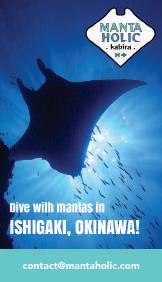
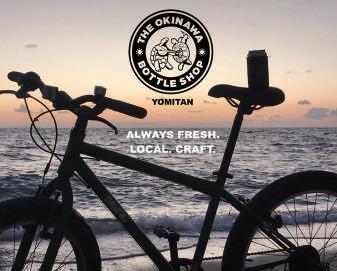







































































































































34 | TRAVELER DIRECTORY w w w k o d o t r a v e l c o m T A I L O R E D P R E M I U M A D V E N T U R E T R A V E L I N J A P A N
BAIRD TAPROOMS




















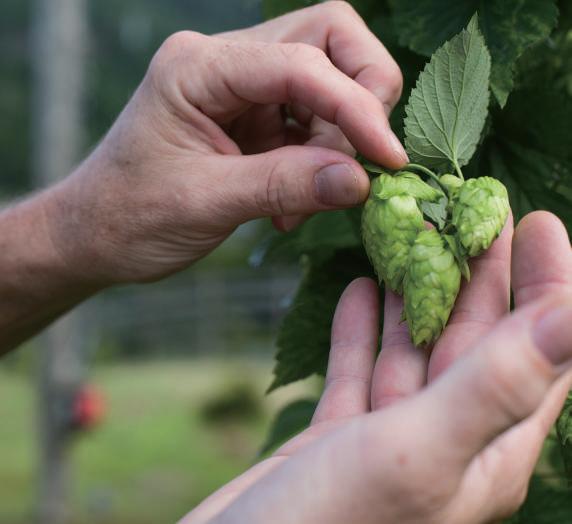




BASHAMICHI | NAKA MEGURO | HARAJUKU | KICHIOJI
TAKADANOBABA | NUMAZU FISHMARKET | CAMP BAIRD









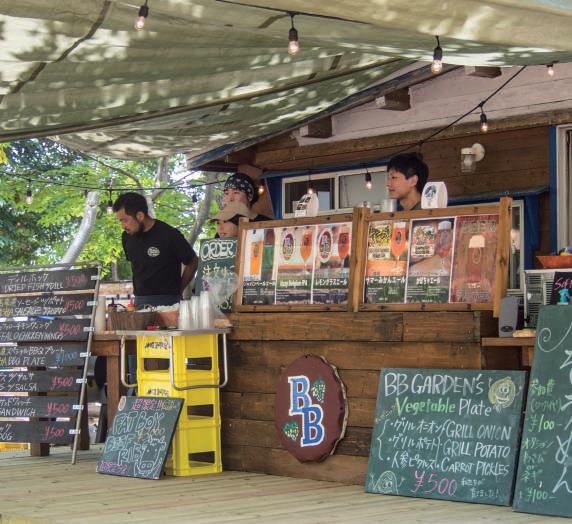

BREWERY GARDENS SHUZENJI BAIRDBEER.COM

15 | TRAVELER























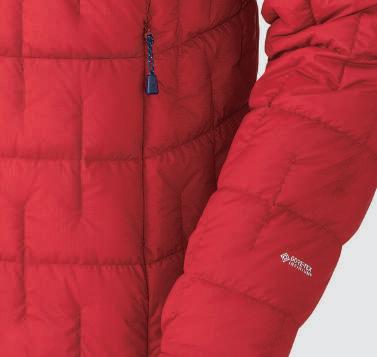












36 | TRAVELER








































































































































 BY QUINLAN FARIS
BY QUINLAN FARIS






























 BY SAMANTHA MYTHEN
BY SAMANTHA MYTHEN
































 BY KATHRYN WORTLEY
BY KATHRYN WORTLEY























































































































































































































































































